6 Earthquakes in the Crust: Closer to Home
“They laugh and play in the sleepy harbor town
So unaware of the danger that’s around
Livin’ on the fault line
Livin’ on the fault line.
No one can run when it finally comes down
Nobody knows what is stirrin’ underground
Livin’ on the fault line
Livin’ on the fault line.Doobie Brothers
1. Introduction
We have heard the bad news regarding the next great subduction-zone earthquake, but there is one small bit of good news. Based on the edge of the ETS zone, west of which the subduction zone is currently locked, the epicenter is likely to be offshore or close to the coast: more than 50 miles from Portland, one hundred miles from Seattle, and a bit farther from Vancouver (Figure 4-25). This means that due to attenuation, seismic waves will be smaller when they reach the major population centers than when they strike the coast.
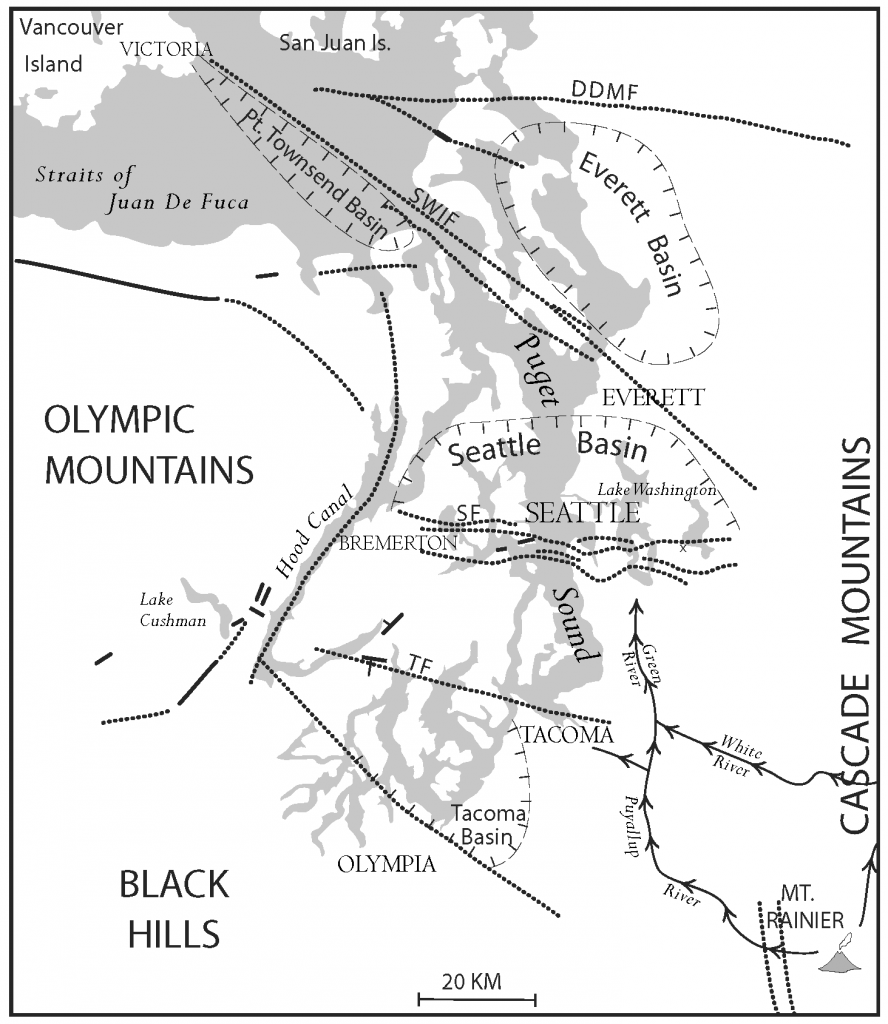
|
|
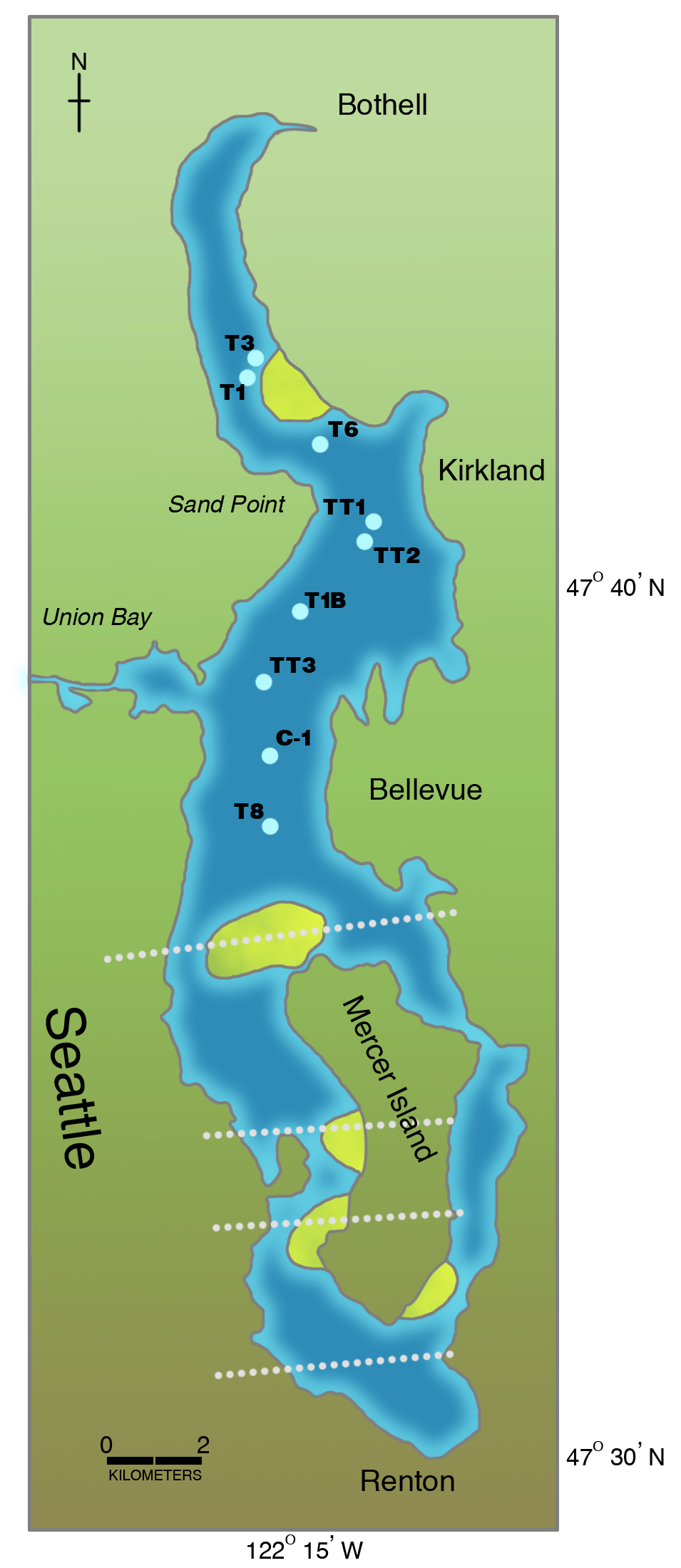 |
But there is still more bad news. The continental crust directly beneath Seattle, Tacoma, and Portland has its own earthquake problem. Figure 6-1 shows potentially active faults in the Puget Sound region. Earthquakes within the crust would be a lot smaller, to be sure. The largest historical crustal earthquake, of magnitude 7.3, struck a thinly populated area on central Vancouver Island in 1946. Three earthquakes in Oregon in 1993 served as wake-up calls: the Scotts Mills “Spring Break Quake” of M 5.6 near Salem, and two earthquakes west of Klamath Falls of M 5.9 and 6.0. The Scotts Mills Earthquake resulted in more than $28 million in losses, including damage to the rotunda at the State Capitol in Salem.
Figure 6-2 shows the large earthquakes in the Pacific Northwest from 1833 through 2001, all of which ruptured either the continental crust, the oceanic crust of the Juan de Fuca Plate or Gorda Plate offshore, or the oceanic crust of the Juan de Fuca Plate beneath the continent in western Washington.
Our historical earthquakes have been troublesome, particularly for the communities affected, but they have not been major disasters like the Northridge or Kobe earthquakes. But evidence has been found for other, more ominous, prehistoric earthquakes that, if they happened today, would result in catastrophic losses to the Puget Sound region. Our story begins in Seattle and an earthquake that took place eleven hundred years ago, shortly before the time of the Norman Conquest of Britain. The detectives uncovering evidence of this earthquake are paleoseismologists, practicing their new field of identifying earthquakes by their geologic signature. The fault they discovered extends east-west through downtown Seattle, beneath the most expensive real estate in the Pacific Northwest.
2. Drowned Forests, Raised Shorelines, and the Seattle Fault
When the level of Lake Washington was lowered in 1916 to accommodate the Lake Washington Ship Canal, boaters noticed something strange beneath the surface of the lake. Dead trees! In growth position, underwater, like silent phantoms (Figure 6-2). In 1919, more than 175 of them, primarily Douglas fir, were removed as navigational hazards. But there were still enough of them left that in 1991 salvage logging was attempted, using a barge and crane to raise the tree trunks from the floor of the lake (Figure 6-3). The wood was found to be in surprisingly good shape.
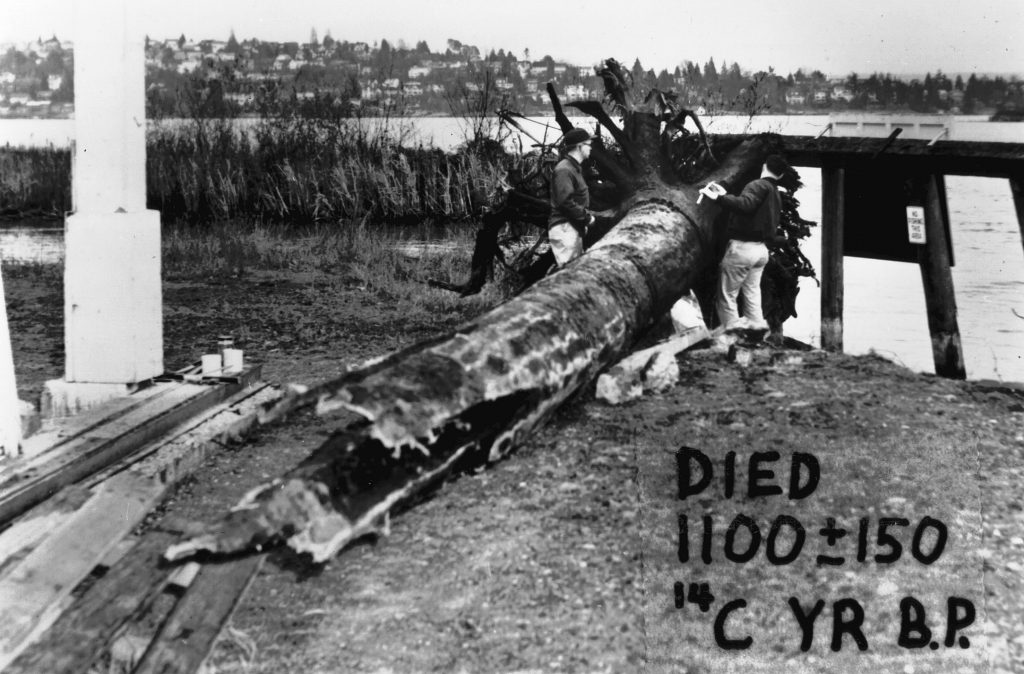
Careful underwater surveying with side-scan sonar revealed a drowned forest northwest of Kirkland near the eastern shore of the lake, and two others off the southeast and southwest shores of Mercer Island. How did the forests get there? The surveys of the lake floor, together with observations by divers, showed that the forests slid into the lake as parts of giant landslides. The rings on some of the tree trunks that were hauled up for logging extended all the way out to the bark (Figure 6-4), which enabled Gordon Jacoby of Columbia University (Fig. 4-15) to show that all the trees died in the fall, winter, or early spring of the same year, about a thousand to eleven hundred years ago. More landslides were found on the south side of Union Bay and at the north end of Mercer Island. But what triggered the landslides, and why did they happen all at once?
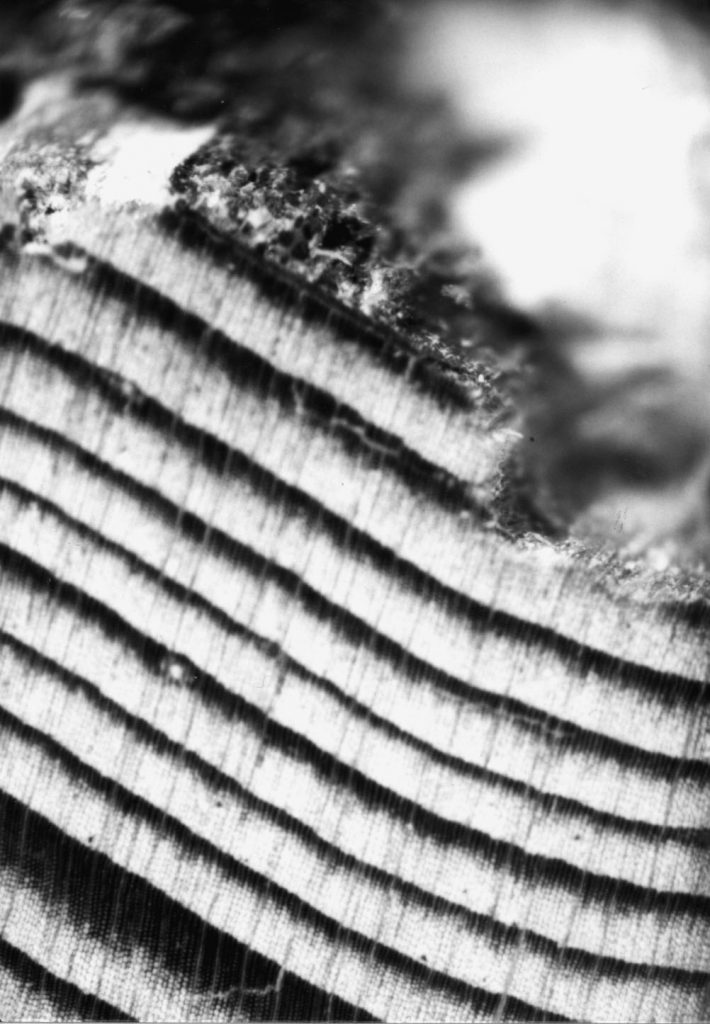
To answer this question, Bob Karlin of the University of Nevada-Reno and Sally Abella of the University of Washington took core samples of sediments that have been accumulating at the bottom of the lake for more than thirteen thousand years, following the melting of a great Pleistocene ice cap that covered Puget Sound as far south as Olympia. An ash layer in many of the cores came from the catastrophic volcanic eruption at Crater Lake that was known to have taken place 7,700 years ago. The sediment cores contain fossil pollen, providing information about changing conditions on land surrounding the lake as well as changing climate since the Ice Age (Figure 6-5). Starting in the 1880s, the pollen changes abruptly from Douglas fir to alder, evidence of systematic logging and the steady deforestation of western Washington starting about that time. This sediment also provides evidence for the lowering of the lake level when the Ship Canal opened in 1916.
Karlin and Abella found an unusually conspicuous sediment layer between the Crater Lake ash bed and the flood of alder pollen as logging of the evergreen forests began (Figure 6-5). This layer was deposited by a flow of turbid sediment, a miniature version of the sediment flows that were generated by Cascadia Subduction Zone earthquakes and transported down the great submarine canyons on the continental slope, as discussed in Chapter 4. By correlating the magnetic properties of sediments from core to core (Figure 6-5), Karlin and Abella determined that this sediment layer was deposited about eleven hundred years ago, about the same time that the landslides carried the forests to the bottom of Lake Washington. Could the sediment layer and the landslides have the same origin?
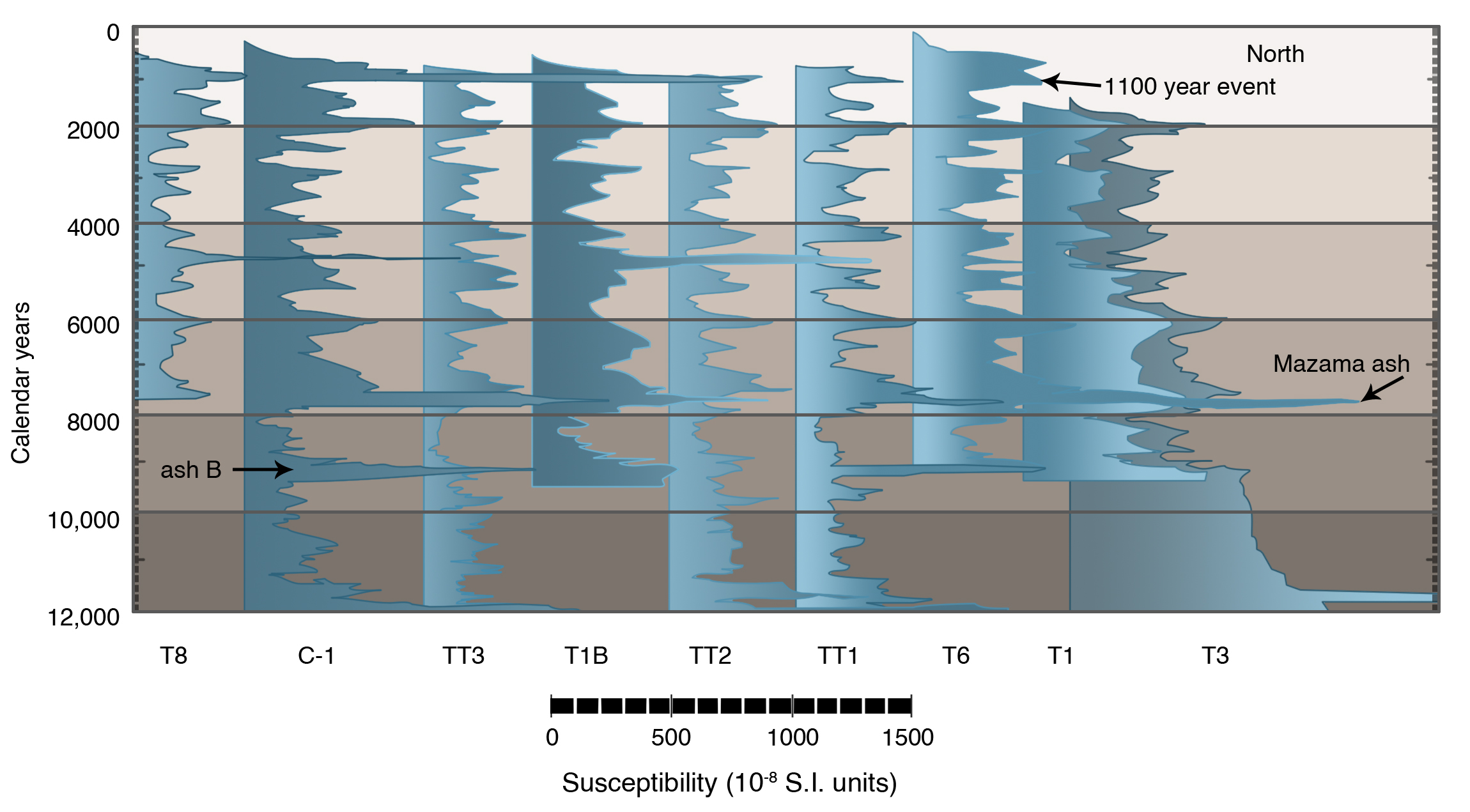
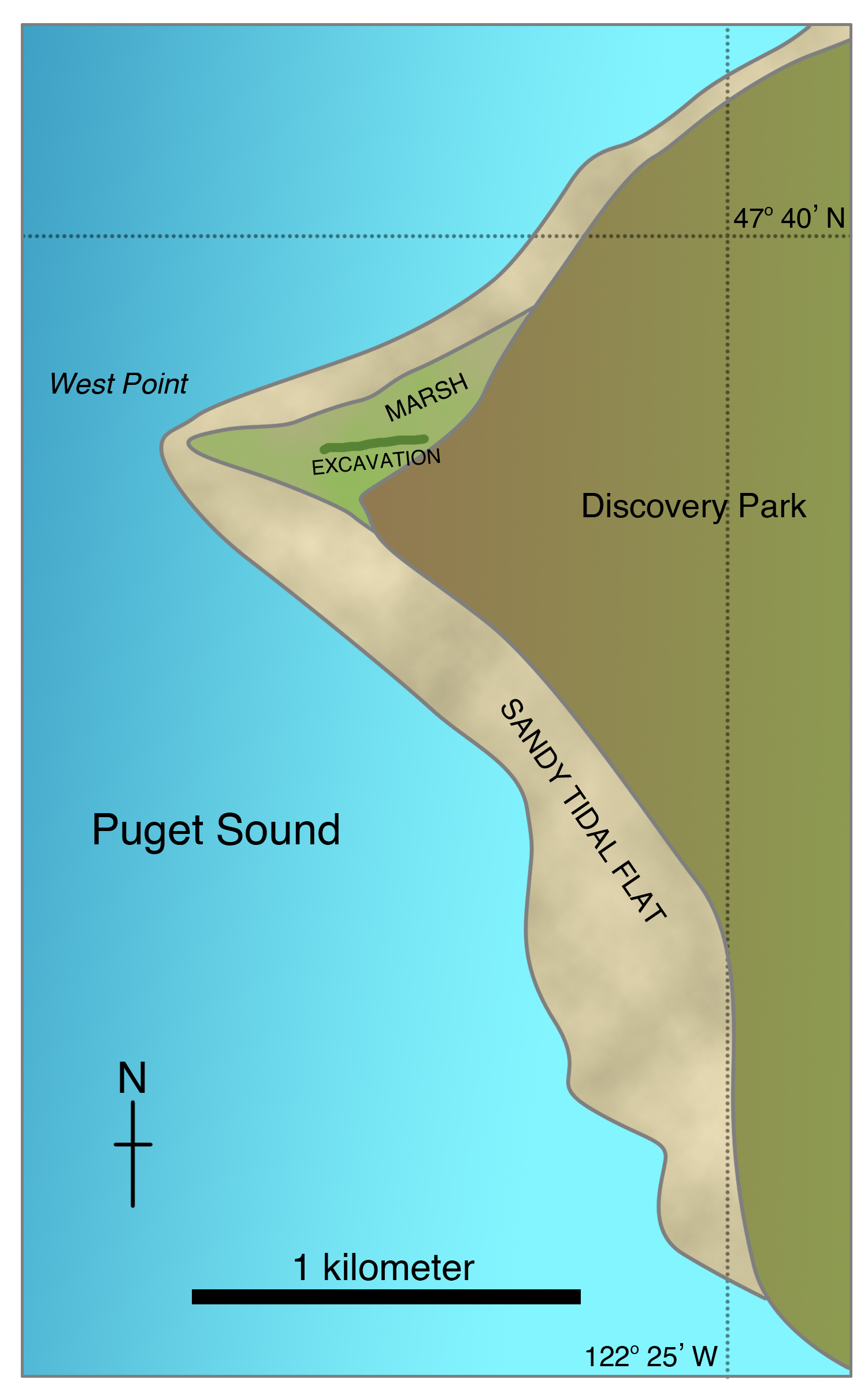 |
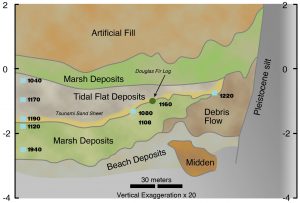 |
The next clue in the detective story came from the shore of Puget Sound, near the lighthouse at West Point, in Discovery Park in the Magnolia District of Seattle (Figure 6-6a). Workers there were excavating for a sewer line when they found an unusual archaeological site: an ancient beach where early inhabitants had built fires and thrown away shells. The beach deposit was overlain by a salt-grass marsh deposit, which was itself overlain by a sand layer containing a Douglas fir driftwood log (Figure 6-6b). Brian Atwater of the USGS was called in, and he concluded that the sand and the driftwood log were deposited by a great wave, or tsunami. High-precision radiocarbon dates of the outer layers of the driftwood log are A.D. 900-930, close to the age of the enclosing sand layer, hence the age of the tsunami that deposited it. The marsh deposit could have been suddenly downdropped by an earthquake, like the marsh deposits Atwater had been studying on the Washington coast. A similar tsunami sand deposit was uncovered to the north at Cultus Bay, at the southern end of Whidbey Island. The sand deposits were dated and found to have been deposited by a tsunami one thousand to eleven hundred years ago—about the same time as the landslides and the sediment layer in Lake Washington.
Atwater asked Gordon Jacoby to look at tree rings on the driftwood log. Jacoby found that the tree-ring pattern was a perfect match with the tree rings from the sunken forests of Lake Washington: the same season of the same year!That meant that the tsunami in Puget Sound and the landslides in Lake Washington happened at the same time. What could cause both events? The most logical explanation: both were triggered by a single large earthquake. But a subduction-zone earthquake was ruled out: these features were too far to the east.
Meanwhile, Bob Schuster of the USGS was working in the southeast Olympic Peninsula, looking at dead trees that had been drowned in mountain lakes dammed by rockslides (Figure 6-7). Radiocarbon dates of these drowned trees indicate that three or four out of six rockslides that he studied could have been deposited at the same time, between one thousand and thirteen hundred years ago. No rockslides this large have happened in historic time, not even during the earthquake of magnitude 7.1 that struck Puget Sound in 1949. Schuster concluded that the rockslides might have been triggered by shaking accompanying a large earthquake of much higher intensity than the 1949 earthquake.
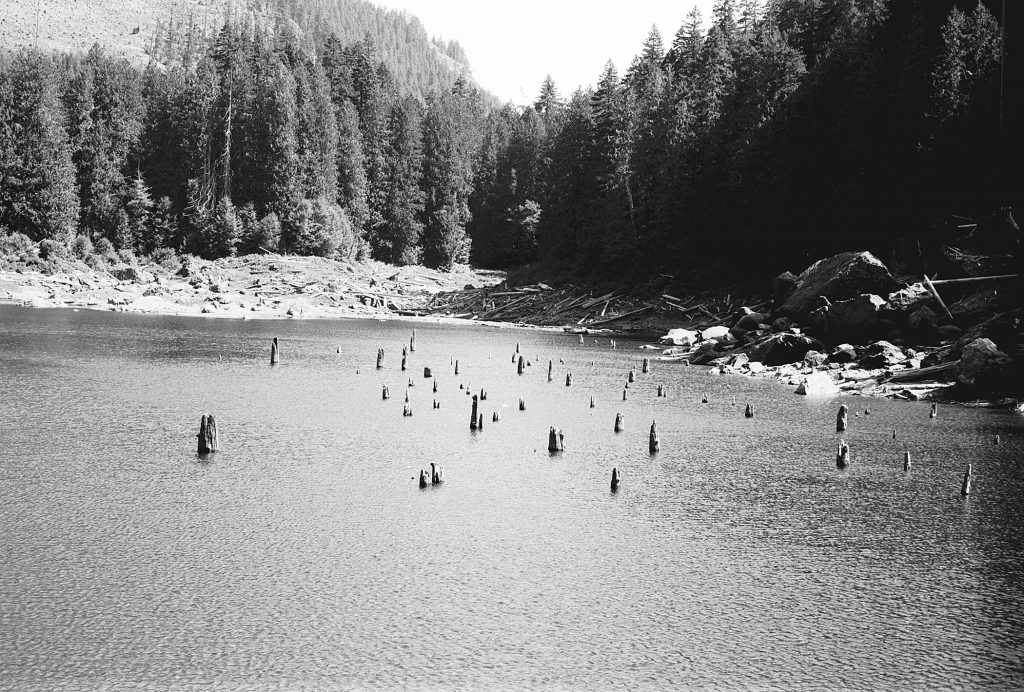
Farther west, Brian Atwater was studying the sediment at the mouth of the Copalis River, north of Grays Harbor on the southwest side of the Olympic Peninsula. This was part of his work on Pacific coastal marshes overwhelmed by subsidence accompanying subduction-zone earthquakes. Sure enough, just as he had found in other coastal marshes, the buried soils were consistent with sudden subsidence—except for one, which showed no evidence for subsidence and was unique in that it was accompanied by sand erupted from a fissure several hundred feet long. The soil was older than the buried marshes related to the last subduction-zone earthquake; between nine and thirteen hundred years rather than three hundred years. Perhaps the vented sand could have accompanied an earthquake in the crust.
Were all these features formed by the same earthquake about eleven hundred years ago? If they were, could the fault producing the earthquake be identified? Bob Bucknam of the USGS came up with a candidate fault that had been previously identified by Howard Gower and Jim Yount, also of the USGS. The evidence was found at Restoration Point, which juts into Puget Sound at the south end of Bainbridge Island, within sight of the tall office buildings of downtown Seattle (Figure 6-8). Above the present tide pools on the modern marine platform is an older marine platform, sloping seaward, which had been raised suddenly as much as twenty-one feet some time between five and seventeen hundred years ago, based on radiocarbon dating. A few miles to the north, near the ferry landing at Winslow, sediment of the same age showed evidence of subsidence. Could the difference in uplift be signs that the fault identified by Gower and Yount have uplifted Restoration Point and downdropped the Winslow ferry landing site?
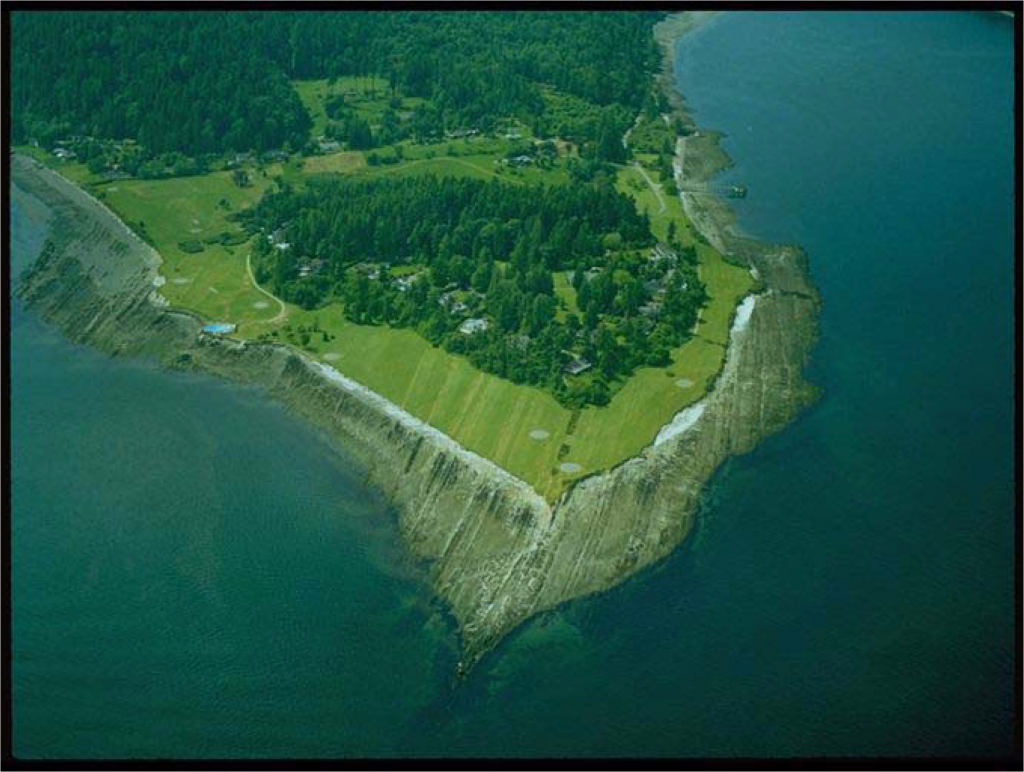
Across Puget Sound in West Seattle, there is another uplifted platform at Alki Point very similar to the one at Restoration Point, but harder to work out due to the presence of houses. And to the north at West Point in the Magnolia District, where the tsunami deposit and driftwood log were found in Discovery Park, the sediment had subsided (Figure 6-6b). If the same fault passed between Alki Point and West Point, it would trend east, crossing downtown Seattle beneath the Alaskan Way Viaduct and crossing beneath Lake Washington north of the Floating Bridge. Bucknam called this structure the Seattle Fault (Figure 6-9).
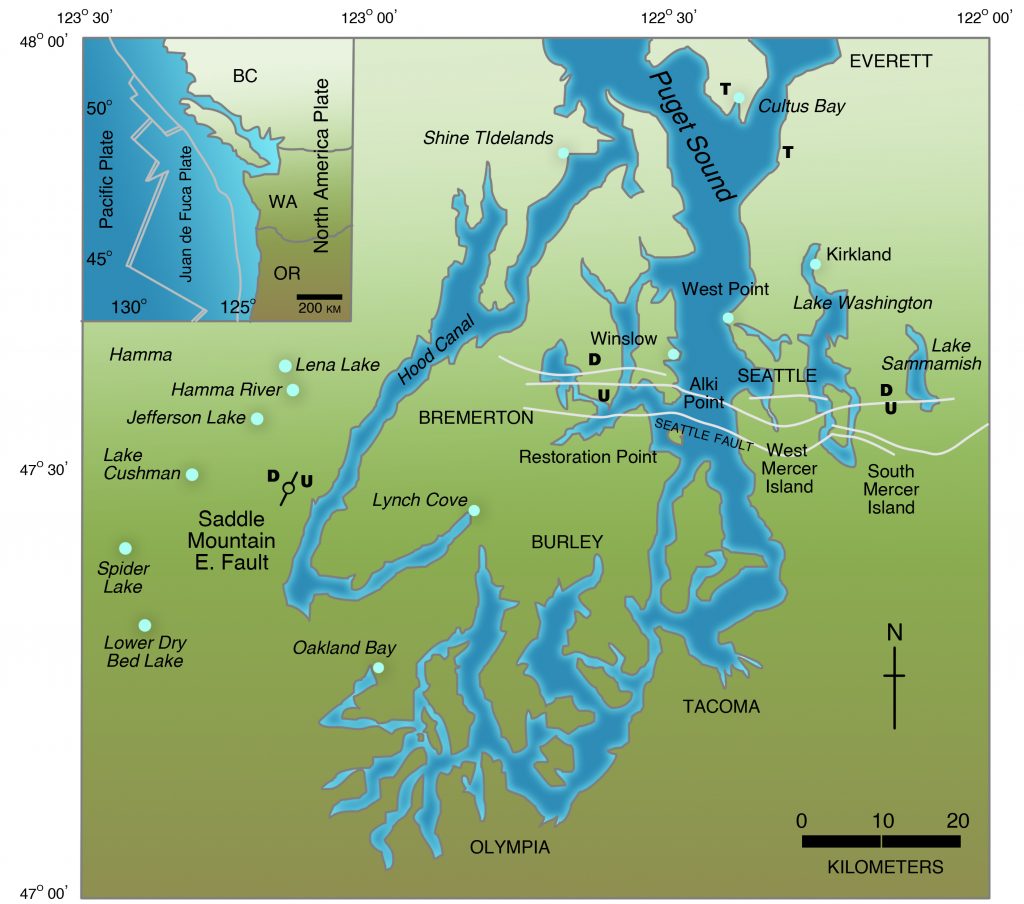
The bedrock geology provides support for such an east-trending structure. Bedrock is found at the surface in the southern part of Seattle, including Alki Point, Seward Park, Rainier Valley, Beacon Hill, and the Newcastle Hills between Renton and Issaquah, east of Lake Washington. But to the north, including West Point, where subsidence was documented, Gower and Yount had found that bedrock is buried to depths of two to three thousand feet. This indicated that the long-term subsidence over hundreds of thousands of years was in the same direction as the subsidence across Bucknam’s Seattle Fault on both sides of Puget Sound.
For a more detailed look at the structure beneath the surface of the ground, Bucknam and his colleague, Sam Johnson, also of the USGS, obtained seismic-reflection profiles acquired by the petroleum industry in the search for oil and gas in the Puget Sound area (Figure 6-10). These were supplemented by USGS marine seismic surveys obtained by Tom Brocher along the waterways of Puget Sound from the San Juan Islands to Olympia and studies by USGS’s Rick Blakely of the Earth’s magnetic and gravity field throughout the Puget Sound region. These studies confirmed that an east-trending fault crosses this area about where Gower, Yount, and Bucknam predicted it should do so. Unfortunately for our earthquake search, there is no fault at the surface. Bucknam and Johnson concluded that this fault was “blind,” that is, it never made it to the Earth’s surface at Seattle (Figure 6-10). In this respect, it was like the blind fault beneath the San Fernando Valley, California, that ruptured during the 1994 Northridge Earthquake.
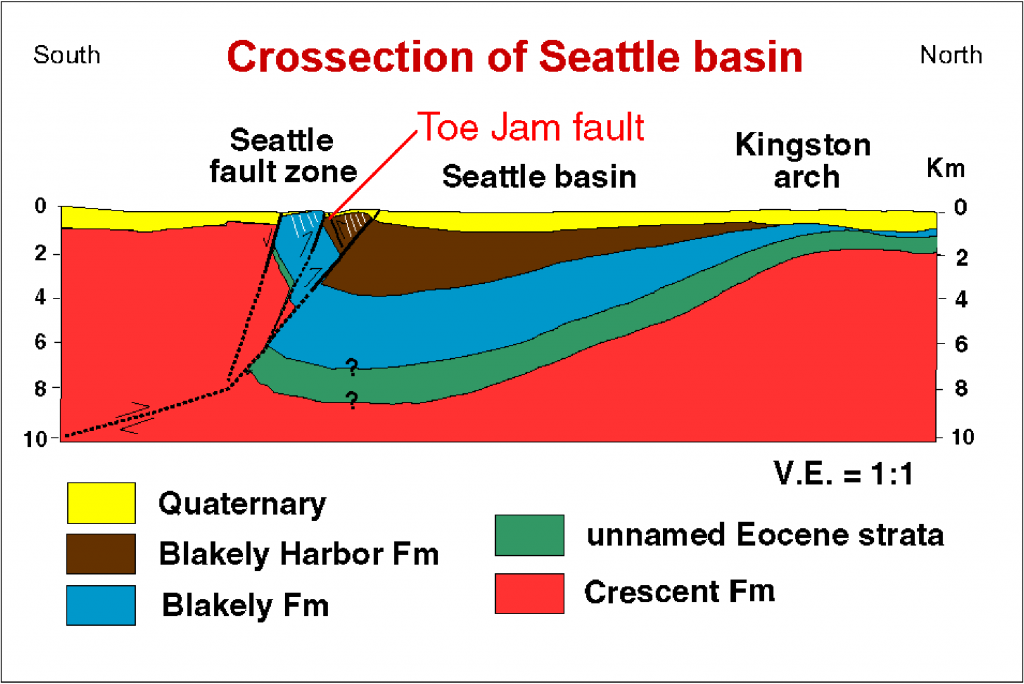
The evidence indicates that the Seattle Fault was the source of an earthquake around A.D. 900-930 based on the radiocarbon age of the outermost tree rings of the driftwood log at West Point. This fault extends from Bainbridge Island across downtown Seattle to Lake Washington and Lake Sammamish, where another sunken forest was found (Fig. 6-9). Shaking accompanying the earthquake caused forested regions next to Lake Washington and Lake Sammamish to slide into the lakes, and large rockfalls on the Olympic Peninsula to block several mountain valleys, producing lakes. During the earthquake, the land rose up at Restoration Point and Alki Point and subsided farther north. Uplift of the floor of Puget Sound generated a great sea wave that struck the coastline at Magnolia Bluff, at the south end of Whidbey Island, and at the mouth of the Snohomish River delta near Everett. The amount of uplift at Restoration Point led to an estimate of magnitude 7 for the earthquake.
Were this earthquake to repeat today, the losses would be catastrophic. The fault extends beneath the most expensive real estate in the Pacific Northwest in an area inhabited by more than a million people, many living in houses built before the development of modern earthquake building codes. Unlike the earthquake of magnitude 7.1 that struck Olympia in 1949 that originated at depths greater than thirty miles, this earthquake would have its focus within ten to fifteen miles of the surface, so that shaking would be much more intense, comparable to or greater than the strong shaking of the 1994 Northridge, California, and 1995 Kobe, Japan, earthquakes.
Did Native Americans record the Seattle Fault Earthquake eleven hundred years ago? Ruth Ludwin of the University of Washington has been collecting oral traditions including a story about the horned serpent, Psai-Yah-hus, a spirit that lived underground and caused landslides and earthquakes. The locations of some of these tales line up along the Seattle Fault. In addition, the origin of Agate Pass at Bainbridge Island has been attributed to a climactic battle between the Giant Serpent and the spirit power of Chief Kitsap, the Double Headed Eagle.
3. Other Active Faults in the Puget Sound Region
The high crustal seismicity of the Puget Sound region is a clue that there should be additional active faults. The search for these faults faces two problems. First, much of the region is covered by dense forest and underbrush so that from the air, one cannot see small landforms like fault scarps as one could in semi-arid eastern Washington. Second, the region was buried by glacial ice similar to that found today in Greenland as recently as 14,000 years ago. During advance and retreat of the glacier, deposition and erosion erased subtle tectonic features, removing any evidence for active faulting older than latest Pleistocene.
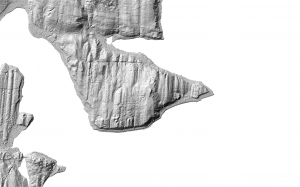 |
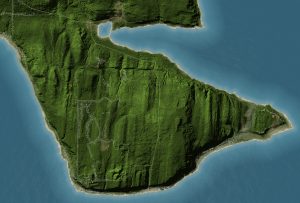 |
However, in the 1970s, prior to the discovery of the Seattle Fault, Joseph Wilson, a graduate student at North Carolina State University at Raleigh, and Bob Carson of Whitman College in Walla Walla, Washington, found evidence for four faults in the southeastern Olympic Peninsula between Lake Cushman and Hood Canal with evidence for Late Quaternary displacement. Radiocarbon dating shows that the latest movement on one of them, the Saddle Mountain East Fault, took place around 1,240 years ago.
The general tectonic outline of the Puget Sound region worked out in the 1980s by Howard Gower and James Yount of the USGS (Figure 6-1) showed other faults in addition to the one marking the boundary between an uplifted area in south Seattle and south Bainbridge Island and a thick basin of young sediments to the north, which would later be called the Seattle Fault and Seattle Basin. In the 1990s, Sam Johnson, Tom Brocher, Rick Blakely, and their USGS colleagues described other basins: the Tacoma Basin to the south and the Everett and Port Townsend basins to the north. They proposed that several of these basins were bounded by active faults (Figure 6-1).
To convince skeptics like myself who thought that, except for the Seattle Fault, the case for active faulting had not been made, more evidence was needed. It was necessary to part the obscuring veil of dense second-growth forest that covered subtle fault scarps that might have formed since the glaciers melted away.
The solution came from LiDAR (Light Detection And Ranging), a new method of imaging the ground using a laser beam reflected by a spinning mirror in a light airplane to penetrate the tree canopy. A LiDAR flight had been commissioned by the Kitsap Public Utility District to study groundwater infiltration and runoff on Bainbridge Island. North of Toe Jam Hill, on the south end of the island, the survey imagery found an unexpected surprise: an east-west-trending fault scarp that became known as the Toe Jam Hill Fault (Figure 6-11). Backhoe trenches across the fault scarp (Figures 6-12, 6-13) revealed evidence for not just one earthquake around eleven hundred years ago, but three and possibly four earthquakes between twenty-five hundred and a thousand years ago. The most recent earthquake is probably the one that raised Restoration Point in A.D. 900-930. The scarp of the Toe Jam Hill Fault faces south, in the opposite direction from the blind Seattle Fault to the north, suggesting that the Toe Jam Hill Fault intersects the Seattle fault at a shallow depth and is secondary to it (Figure 6-10).
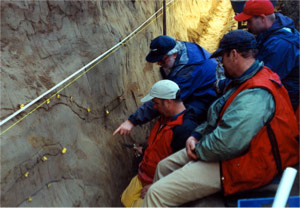
More recent LiDAR surveys have found additional post-glacial fault scarps at Toe Jam Hill (Figure 6-11), on a fault south of the Darrington-Devils Mountain Faults, on the Tacoma Fault, and in the southeastern Olympic Peninsula, where Wilson and Carson had worked (Figure 6-1). Post-glacial fault scarps were also found on the northern margin of the Olympic Mountains, and west of the Toe Jam Hill Fault on the Kitsap Peninsula. The Southern Whidbey Island Fault (SWIF, Figure 6-1), which comes ashore south of Everett, underwent displacement of one to two meters on Whidbey Island three thousand years ago. This fault may be the longest active fault in the Puget Sound region, possibly capable of an earthquake even larger than that proposed for the Seattle fault. It is traced southeastward into the Cascade foothills, and it may influence the location of Snoqualmie Falls. A regional wastewater treatment plant has been built by Seattle Metro across the fault in southern Snohomish County north of Woodinville, despite protests from homeowners living nearby. The slip rate is likely to be low in comparison with the subduction zone, thereby reducing the likelihood that it will rupture during the life of the treatment plant.
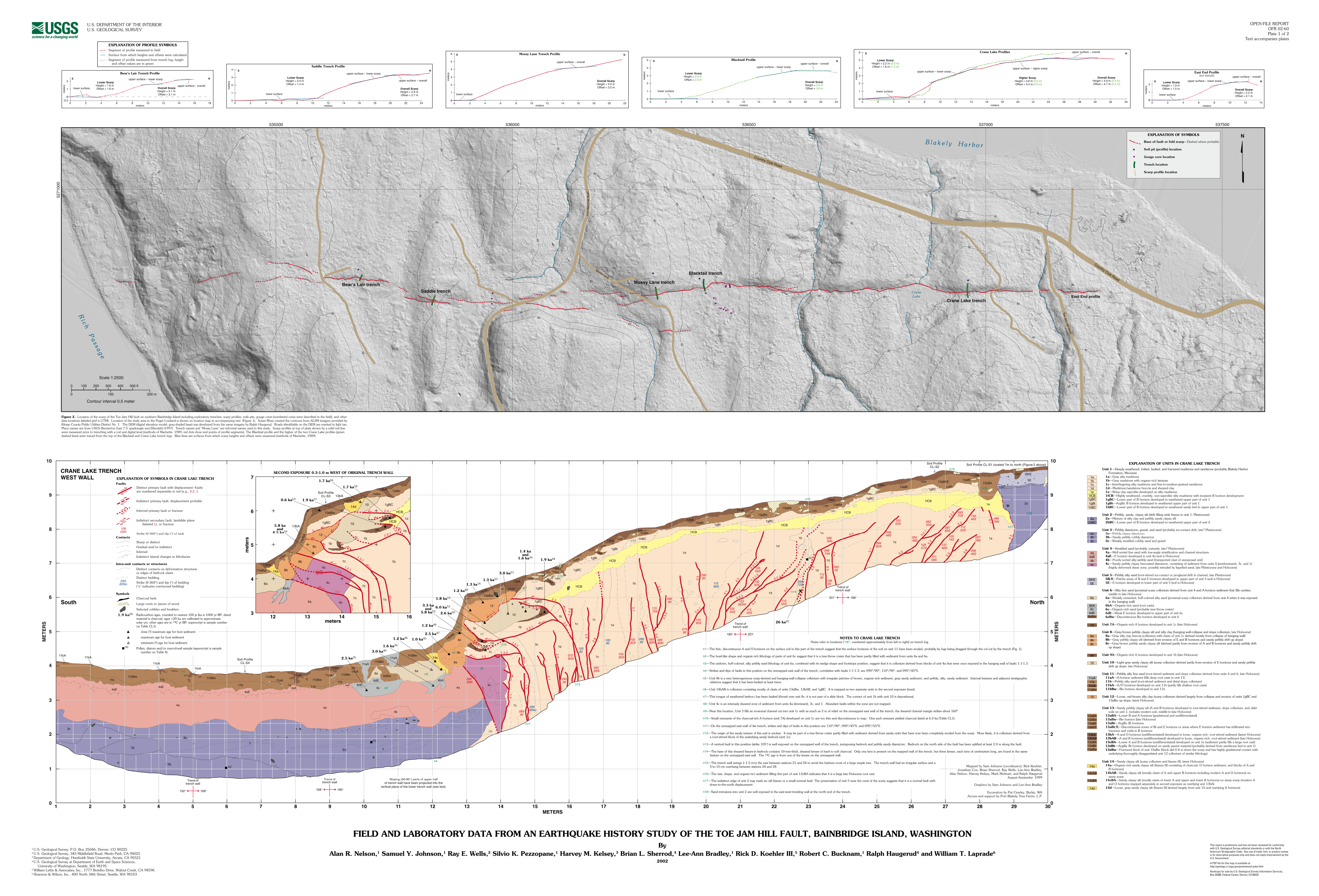
In the Snohomish River delta near Everett, Joanne Bourgeois of the University of Washington and Sam Johnson of the USGS found evidence for at least three earthquakes and one tsunami. The tsunami deposit appears to be related to the earthquake on the Seattle Fault in A.D. 900-930. The most recent earthquake is dated between A.D. 1430 and 1640, younger than any other earthquakes in the Puget Lowland identified by paleoseismology and not too much earlier than the historical record. Vented sand found by Steve Obermeier of the USGS in overbank deposits of rivers near Centralia, Washington, appears to be related to a crustal earthquake south of Puget Sound, but the surface fault source for this earthquake has not been identified.
Puget Sound has been the target of focused studies of active faults in part because that’s where the people live who are at risk. Are we likely to find a similar concentration of active faults elsewhere? The high crustal seismicity of the Puget Sound and south Georgia Strait region suggests that this region is special. Confirmation comes from the GPS network, which had already confirmed the earlier land-based geodetic survey data that most of the compression is north-south. Stephan Mazzotti of the Pacific Geoscience Centre found that there is active crustal shortening between the south end of Puget Sound near Olympia and the Strait of Juan de Fuca as far north as Victoria. If one takes out the elastic deformation marking the buildup toward the next Cascadia Subduction Zone earthquake, this region is being squeezed together at about a quarter inch (six millimeters) per year. So the answer is: yes, there is something special about the weaker crust of northwestern Washington.
When will the next big crustal earthquake strike? The answer to this question is unknown, but some questions may now be asked. First, the time around A.D. 900 must have been characterized by many violent crustal earthquakes, perhaps leading to the horned serpent stories of Native Americans. Was there only one huge earthquake extending from Copalis River to Lake Sammamish, or was there a cluster of earthquakes? The earthquakes recorded on the Toe Jam Hill Fault and in the Snohomish River delta suggest a cluster of earthquakes. (An example of a historical cluster is found in western Nevada, where large earthquakes struck in 1903, 1915, 1932, 1934, and four in 1954, although the recurrence interval on any given fault there is measured in thousands of years.)
Does the active faulting of a millennium ago mean that more crustal faulting is due soon? We don’t know.
Now and then, a moderate-size crustal earthquake strikes the Puget Sound region. On April 14, 1990, an earthquake of magnitude 5.2 struck near the town of Deming, east of Bellingham. On May 2, 1996, a magnitude 5.3 earthquake had its epicenter a few miles east of the small town of Duvall, in the foothills of the Cascades northeast of Seattle. It resulted in only minor damage, and its main claim to fame was that it caused the evacuation of the Kingdome during a Seattle Mariners baseball game. The previous year, on January 28, a magnitude 5 earthquake struck the southern Puget Sound region north of Tacoma. Earthquakes such as these are likely to occur anywhere west of the Cascades, although they are more likely in the Puget Sound region. They rate a newspaper story for a day or so, a story which usually gives off a whiff of impending doom, but earthquakes like these do little damage. It is impossible to assign them to a specific fault.
We will revisit the problem of forecasting the next crustal earthquake in the following chapter.
4. Earthquakes and Cascade Volcanoes
The reawakening of Mt. St. Helens began on March 20, 1980, with an earthquake of magnitude 4.2 followed by a crescendo of earthquakes that rose to a peak on March 27, then decreased in number as the time of the climactic eruption approached. Many of these earthquakes were due to the passage of magma far beneath the surface and not the rupture of faults. (A comparison would be a growling stomach versus a stick breaking.) An earthquake of magnitude 5.1 on the morning of May 18 led to the collapse of the north side of the volcano and a hot avalanche that swept down the valley of the Toutle River. In addition to the avalanche, a mudflow (called by the Indonesian word lahar) continued down the valley and beneath the bridge at Interstate 5, partially burying houses in the town of Castle Rock. In the following year, the Elk Lake tectonic earthquake of M 5.5 was characterized by right-lateral strike-slip faulting. This earthquake was part of a linear north-northwest-trending band of earthquakes called the St. Helens Seismic Zone in which most of the earthquake fault-plane solutions are right-lateral strike slip. This seismic zone has not been correlated to a known surface fault.
Farther north, a north-south-trending band of earthquakes is located west of the summit of Mt. Rainier, icon of Seattle and Tacoma, exuding menace as well as scenic grandeur. Mt. Rainier showed signs of eruptive activity in the nineteenth century, and it has been the source of debris flows and glacial outburst floods. These flows have been limited to the mountain itself, but two prehistoric lahars swept down river valleys into areas that now have large populations (Figure 6-1). The largest of these, the Osceola Mudflow, swept down the White River valley forty-five hundred to five thousand years ago and reached Puget Sound more than sixty miles away. Five hundred years ago, a smaller lahar, the Electron Mudflow, coursed down the Puyallup River valley as far as the town of Orting, thirty miles from the volcano, in less than thirty minutes. Cities at risk from future mudflows include Auburn, Kent, Puyallup, and even Tacoma. Some houses in these cities are built directly on these mudflow deposits.
Pierce County, the region at greatest risk from lahars, has developed a lahar warning system in cooperation with the USGS Cascade Volcano Observatory in Vancouver. Specially designed acoustic flow monitors at Mt. Rainier would detect a lahar as it begins. This would trigger an array of sirens throughout the Puyallup and Carbon river valleys alerting residents to follow predetermined marked evacuation routes to higher ground, out of the path of the lahar. The time between identification of the lahar and sounding of the warning sirens is less than two minutes. If you live in the path of these mudflow deposits, contact Pierce County Emergency Management for details.
No relation between tectonic earthquakes and these mudflows has been demonstrated. The 1981 Elk Lake Earthquake struck the St. Helens Seismic Zone after the climactic eruption, not before. However, it is likely that the first signs of a future volcanic eruption will be registered on seismographs, as was the case for Mt. St. Helens in 1980.
5. The Portland Hills Fault
Sixteen million years ago, great floods of basaltic lava issued from crustal fractures in easternmost Washington and Oregon and western Idaho and poured across the Columbia Plateau in a broad front, hemmed in only by the Cascades, through which the lava burst in a fiery flood more than twenty miles across to enter the northern Willamette Valley and finally to flow into the sea. These lava eruptions have no counterpart in human history. One cannot imagine looking toward an advancing front of molten basalt extending from horizon to horizon, from the Columbia River at Portland south to the Waldo Hills east of Salem, Oregon, flowing faster than one could ride a horse, almost like water. This happened not just once but dozens of times over several million years.
Long after the basalt lava had frozen into stone, less than a hundred thousand years ago, there was a different kind of catastrophe. During the Pleistocene, the interior of British Columbia was covered by a vast ice cap, like Greenland today, and glaciers had advanced southward into northern Washington, damming the Columbia River and its tributaries at Spokane to form a huge body of fresh water, Glacial Lake Missoula, that extended across Idaho into Montana, almost to the Continental Divide. At the end of the Pleistocene, the glaciers began to melt and retreat, and the ice dam at Spokane suddenly ruptured. The lake drained first beneath the ice, then floated the ice roof and caused it to collapse. The resulting iceberg-strewn deluge, lasting at least a week, drained Lake Missoula, briefly carrying more water than all the streams on Earth do today.
Nothing else on Earth matched this apocalyptic Missoula flood. The great volume of water was too much for the valley of the Columbia River, and water rushed across the Columbia Plateau, ripping away the rich Palouse soil and eroding down to the bare basalt, forming a broad wasteland called the Channeled Scablands. The thundering torrents carved out the Grand Coulee and Dry Falls and deposited giant sandbars on the Columbia River below Wenatchee, so large that they can be seen from space. Like its basaltic predecessor millions of years before, the water flowed out across a broad front. The doomsday scenario repeated itself many times as the ice cap retreated, then advanced, then retreated, over and over again. The last time was about twelve thousand years ago.
Satellite images of the Portland metropolitan area show the effects of these giant floods, scouring out the bases of Pleistocene volcanoes and carving canyons through the basalt mountains, one now occupied by Lake Oswego, a Portland suburb (Figure 6-11). For the geologist looking for active faults, the effect is the same as the grinding of glaciers in Puget Sound: the floods erased any evidence of active fault scarps older than twelve thousand years as far south as Eugene.
Yet there is one feature that is hard to miss: the straight-line base of the Portland Hills in downtown Portland (Figure 6-15). The hills are underlain by Columbia River Basalt, arched upward into an anticline, that may be related to the origin of Willamette Falls at Oregon City. The late Marvin Beeson of Portland State University described the Portland Hills structure and fault, which is more or less parallel to the St. Helens Seismic Zone to the north and the Mount Angel Fault to the south, both suspected of being right-lateral strike-slip faults. For a long time, proof of its activity was lacking, although for earthquake hazard planning exercises, it was assumed to be capable of an earthquake of magnitude greater than 7, the most dangerous fault in Oregon aside from the subduction-zone fault.
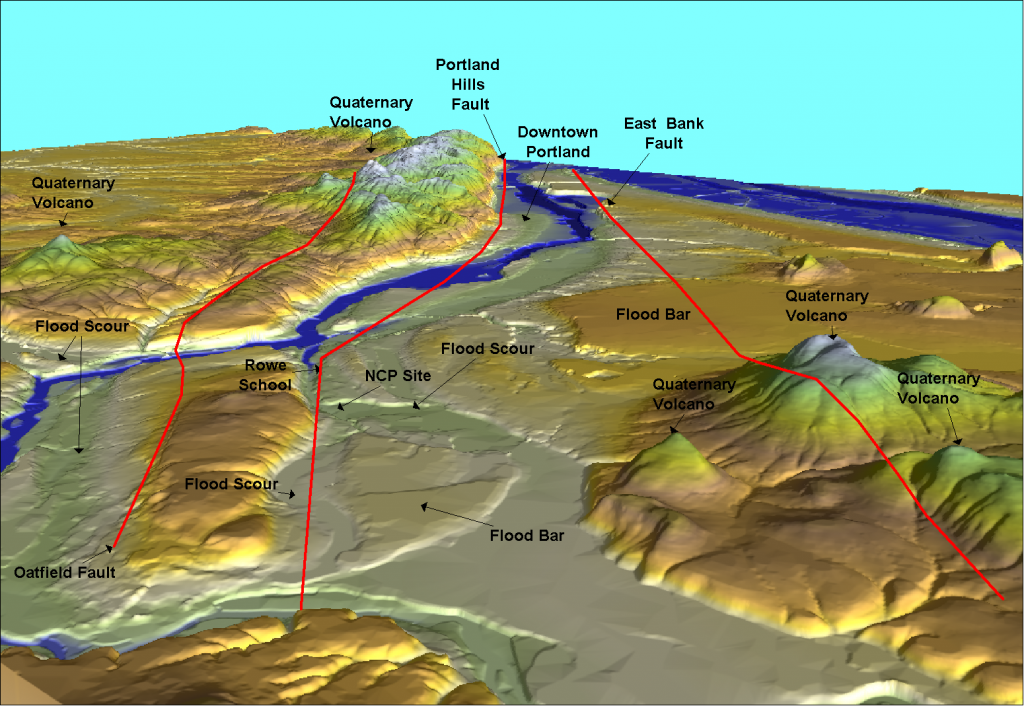
Ivan Wong of URS Greiner and Associates and Ian Madin of the Oregon Department of Geology and Mineral Industries decided to look for the smoking gun that would show if the fault is active or not. Seismic surveys along the Willamette River by Tom Pratt of the USGS and Lee Liberty of Boise State University provided hints that the fault cuts the latest Pleistocene Missoula flood deposits. These distinctive deposits are rhythmically bedded, with each bed deposited by one of the catastrophic Missoula floods in the latest Pleistocene. A detailed seismic survey in North Clackamas Park southeast of Milwaukie (NCP, located on Figure 6-14) provided evidence that the flood deposits may be deformed. Then somebody noticed a retaining-wall excavation at Rowe Middle School, not far from North Clackamas Park. In this excavation, the Missoula flood deposits are clearly folded. The first Oregon fault west of the Cascades could now be classified as possibly active.
In addition, excavations for an expansion of the Oregon Convention Center showed Missoula flood deposits that are cut by sand dikes, generally considered to be formed by liquefaction, diagnostic for an earthquake origin. However, could these dikes have been produced by a subduction-zone earthquake? Could they somehow be related to the massive amount of water that repeatedly covered the area in the latest Pleistocene? Preliminary examination of excavations around Portland suggests only one episode of sand dike formation, suggesting to me that they formed during one high-intensity crustal earthquake rather than repeated subduction-zone earthquakes or repeated flooding episodes. However, this is not “smoking gun” evidence.
Geophysical studies by Rick Blakely and his colleagues at the USGS revealed two additional faults parallel to the Portland Hills Fault, the East Bank Fault following the east side of the Willamette River to Mt. Scott, an inactive Quaternary volcano, and the Oatfield Fault on the west slope of the Portland Hills extending southeast to Lake Oswego and Gladstone (Figure 6-14). So, like the Seattle Fault, the Portland Hills Fault is a broad zone of faulting rather than a single fault. However, it is poorly located, even in downtown Portland.
Portland has an earthquake history, with the largest number of earthquakes recorded anywhere in Oregon. Partly this is an accident of early settlement of the Portland Basin. An earthquake on October 12, 1877, resulted in intensities as high as VII in Portland. Lower-intensity earthquakes were recorded in Portland on February 3, 1892, December 29, 1941, and December 15, 1953. The best-studied earthquake struck on November 5, 1962, with an epicenter near Vancouver and a magnitude of 5.2 to 5.5. This earthquake caused minor damage, including fallen chimneys and broken windows.
6. Earthquakes at the End of the Oregon Trail:
Willamette Valley
Fifty million years ago, northwest Oregon was a low coastal plain, with the shoreline close to the western edge of the present Willamette Valley, extending northwestward toward Astoria into what would one day become the Coast Range. East of the shoreline, rivers deposited clean sand, and in their floodplains were broad swamps and marshes, like the tropical Pacific coast of Guatemala today. Over the next few million years, the sand and the organic deposits of the swamps were slowly buried beneath younger deposits, and the organic materials began to turn into coal and generate natural gas. The rock layers containing the coal and the sand were tilted, folded, and faulted. North of the Columbia River, the buried swamp deposits of this ancient tropical coast would form the major resource for a coal-mining industry in western Washington. South of the Columbia, the economic potential of these deposits was still unrealized.
Near the backwoods village of Mist, Oregon, Chuck Newell had a dream. As a geologist for Shell Oil Company and later as an independent consultant, Newell had slogged up the brushy creeks and barren clearcuts of the northern Coast Range, and he slowly pieced together an idea about the hidden geologic structure. Maybe the gas from the swamp deposits had migrated into the river sand, now hardened into sandstone. Maybe there was a gas field beneath a broad uparched anticline that Newell had mapped beneath the alder and devil’s club jungle of the Coast Range.
This seemed a far-fetched idea because no one had ever discovered commercial quantities of oil or gas in Oregon or Washington, despite nearly a century of exploration. However, Newell convinced Wes Bruer, his former classmate at Oregon State University and a geologic consultant for Reichhold Chemical Company, that the Mist Anticline might contain commercial quantities of gas. Reichhold had purchased the Phillips urea plant at St. Helens, Oregon, and the plant required about nine million cubic feet of gas per day as raw material feedstock for the production of urea. Accordingly, Reichhold was persuaded to drill a well, and the Mist gas field was discovered. Overnight, Oregon had a local source of natural gas, the first in the Pacific Northwest.
As soon as the word was out, lease brokers fanned out across the Willamette Valley talking to grass-seed farmers and timber owners. Geophysical trucks laid cable and geophones along country roads and through pastures for seismic surveys. Wildcat wells were drilled in the region from Hillsboro to Eugene.
Alas, there were no more Mist gas fields, and the oil and gas boom crashed as quickly as it had started. But left behind were all the seismic surveys and wildcat well logs, which illuminated for the first time the complex geology beneath the orchards and vineyards of the Willamette Valley, just as they had for the Puget Sound region to the north. There were folds and there were faults, including a fault extending along the northern foot of the Waldo Hills east of Salem, and another passing beneath the Benedictine abbey at Mount Angel (Figures 6-16 to 6-18). These faults had been discovered in the search for oil and gas. Could they be an earthquake hazard?
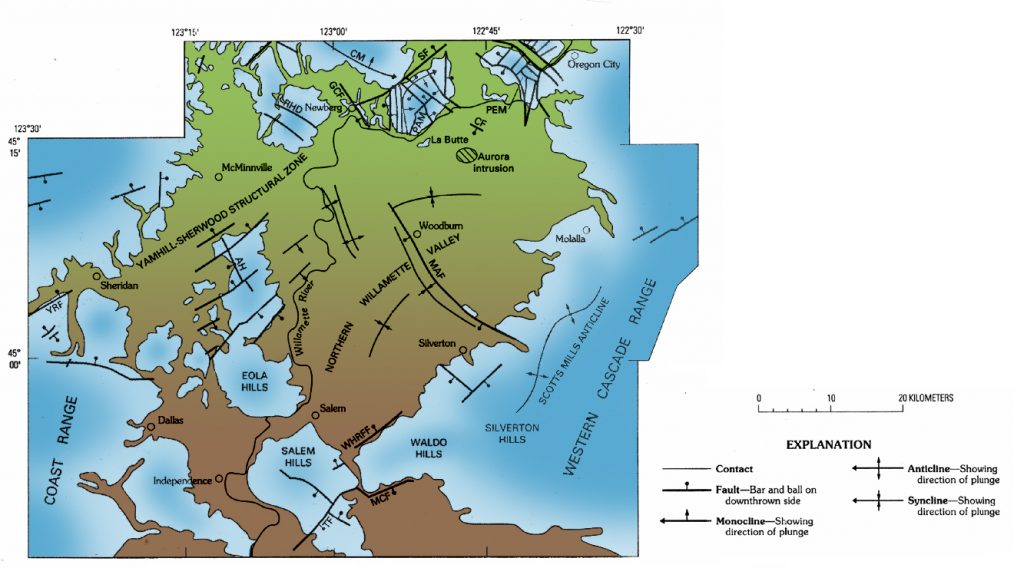
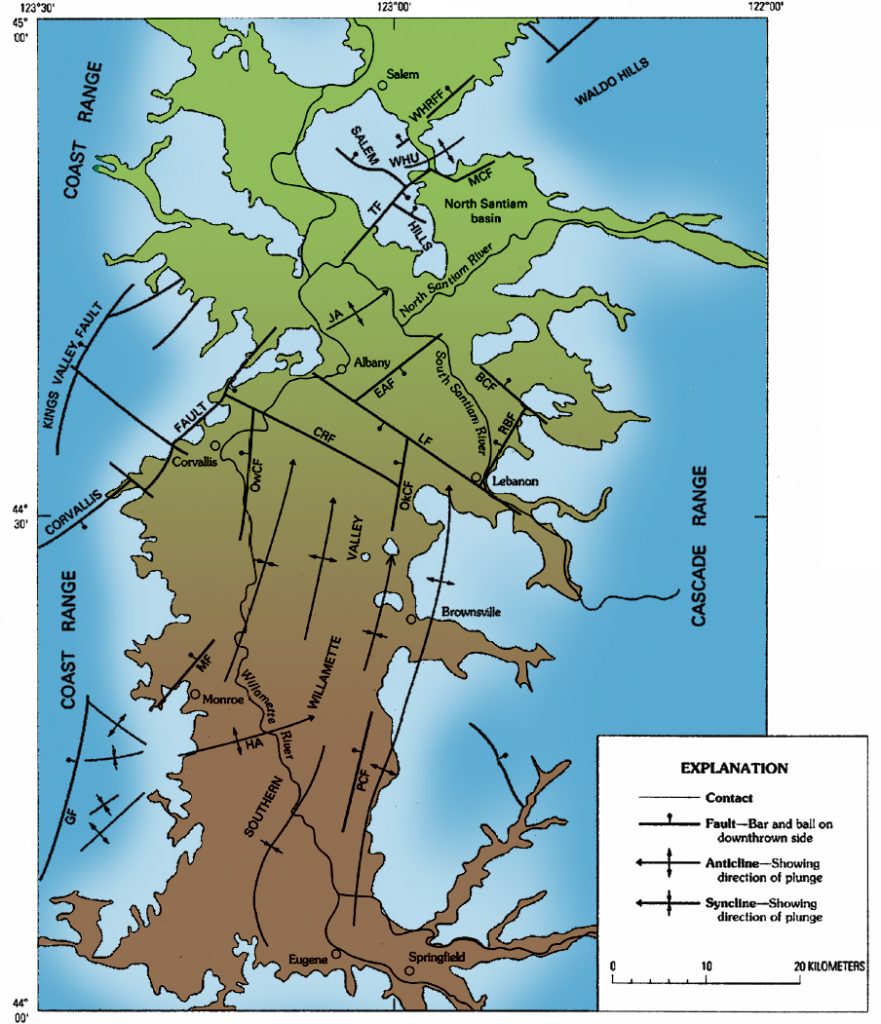
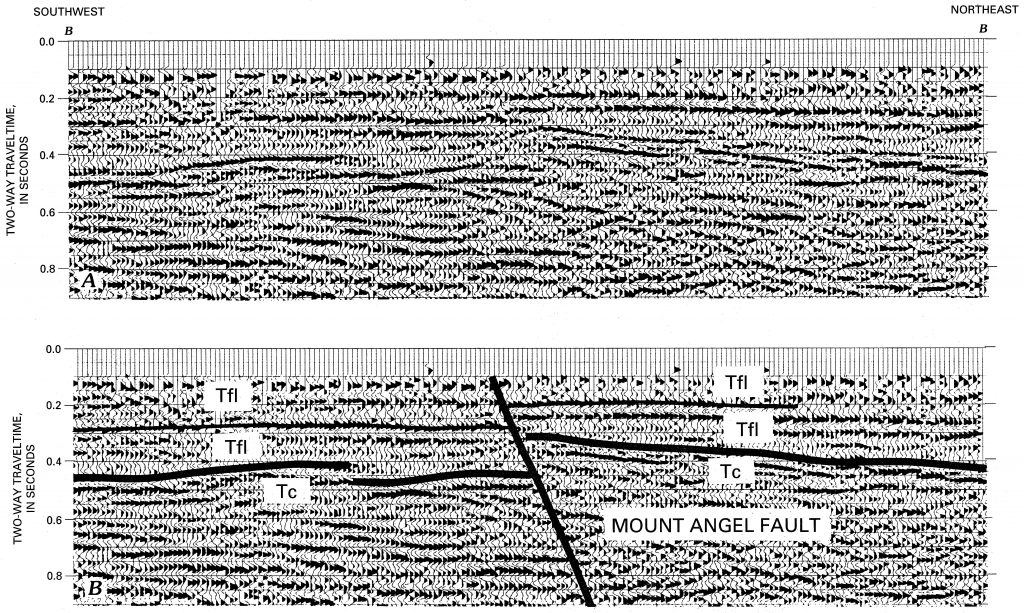
Ken Werner, a graduate student at Oregon State University, collected the seismic surveys and well logs and mapped a subsurface fault extending from the Waldo Hills northwest beneath Mount Angel to the city of Woodburn near Interstate 5. In 1990, while Werner was working on his thesis research, seismologists John Nábelek of Oregon State University and Steve Malone of the University of Washington told him about a flurry of small earthquakes they had just recorded beneath Woodburn. Werner concluded that these earthquakes were related to the subsurface Mount Angel Fault (Figures 6-16 to 6-18). In September 1992, Werner and his colleagues published a paper in Oregon Geology, a journal published by the Oregon Department of Geology and Mineral Industries, with a map of the fault and a discussion of the Woodburn earthquake swarm. Unknown to Werner, strain had been building up on the Mount Angel Fault beneath the Waldo Hills southeast of Woodburn and was already near the breaking point.The rupture came without warning six months later, at 5:34 a.m. on March 25, 1993, ten miles beneath the soft green hills east of the village of Scotts Mills, at the east edge of the Willamette Valley. In Molalla, eight miles north of the epicenter, José Alberto Nuñez felt the powerful rumbling and watched as his kitchen cabinets blew open, scattering glassware and dishes onto the kitchen floor. To the night crew at the Safeway store in Woodburn, fifteen miles northwest of the epicenter, the earthquake was a ground wave rolling beneath the floor, spilling out merchandise aisle by aisle. Ricky Bowers was driving across a bridge on State Highway 18 over the Yamhill River at Dayton, twenty-five miles away, when the bridge jumped off its supports, causing him to slam into the exposed concrete slab, blowing out all four of his tires.Fortunately, students were on spring break at Molalla Union High School, an unreinforced brick building constructed in 1925, where two gables on the exterior façade collapsed. The timing of the earthquake prevented serious injury to students, and school officials had only to worry about where classes would be held the following week. A block away from the school, Philip Fontaine ran out into his front yard, carrying his young son. “The children were all screaming. Everything was just shaking and not stopping.”
At Mount Angel, ten miles to the west, there was major damage to the Benedictine convent and training center, the Benedictine abbey, and St. Mary’s church and school.
Commercial buildings in the historic downtown district of Woodburn were hit hard. Sharon Walsh, caretaker of the 102-year-old Settlemier Mansion, cowered as the house creaked and heaved, cracked and twisted, and she braced herself for a collapse. José Nuñez made it to his office at the Salud Medical Center in Woodburn only to find it in a shambles, with a gaping hole in the ceiling. In the town of Newberg, twenty-eight miles northwest of the epicenter, at least ninety buildings were damaged.
The State Capitol building in Salem, twenty-one miles away, had been declared vulnerable to an earthquake, with a price tag for seismic reinforcement of $4 million. The Legislature chose not to act. The earthquake produced cracks inside the rotunda, which was closed indefinitely. Concrete fireproofing on the steel I-beams supporting the ceiling of the legislative chambers was damaged. High atop the Capitol, the ten-ton statue of the Golden Pioneer rocked and lurched, rotating a sixteenth of an inch, but miraculously did not fall from its pedestal.
Damage was estimated at more than $28,000,000, with $4,500,000 to the State Capitol alone. (The ultimate cost of retrofitting the Capitol was later estimated at more than $67,000,000!) Surprisingly, there were no deaths. Injuries were limited to those from falling glass and bricks and to some of the employees of a large Walmart store overcome by fumes from bottles and cans of garden chemicals that had crashed to the floor. Unreinforced masonry buildings suffered a disproportionate share of the damage. The timing of the earthquake was fortunate: early in the morning during the week of spring vacation, preventing deaths at the unreinforced Molalla High School building. The fortunate timing gave the earthquake its name: the Spring Break Quake. Losses would have been much higher if the earthquake had struck one of the larger communities of the Willamette Valley rather than a rural area in the foothills of the Cascades.
Former senator Ron Cease of Portland, a member of the legislature at the time, may have said it best: not being able to walk beneath the rotunda on their way to work had an educational effect on Oregon’s legislators in terms of earthquake hazards!
As shown in Figure 6-16 and 6-17, there are other faults in the Willamette Valley. The Corvallis Fault was mapped by Chris Goldfinger on the northwest side of the city of Corvallis in low hills slated for urban development. Despite considerable efforts, none of these faults can be shown to displace Holocene deposits (younger than ten thousand years). Accordingly, we cannot state that these faults are active. The faults can be marked on the maps of areas being considered for urban development, and developers, local government, and potential buyers can make up their own minds about the potential for fault rupture. If you were considering purchase of a new house in the Willamette Valley, would you want to be told by local government that your house would be built on or close to a major fault, even though it could not be said that the fault was active or not?
7. Southwest British Columbia
Northern Vancouver Island just doesn’t seem like Earthquake Country. The highway north of Victoria runs past small towns along the east coast of the island; it is lined with firs, with breathtaking views of the Georgia Strait, the Gulf Islands, and on a clear day, the snow peaks of the Coast Mountains. The road passes through Courtenay to Campbell River, past fishing villages and logging camps. One branch of the road crosses the Forbidden Plateau and Strathcona Provincial Park on its way to a lonely, storm-swept fjord below Gold River, on the Pacific Ocean side of the island.
This thinly populated region was the location of the largest crustal earthquakes in the short recorded history of the Cascadia region, an event of M 7.0 on December 6, 1918 and a larger earthquake of M 7.3 on June 23, 1946 (located on Figure 6-19).
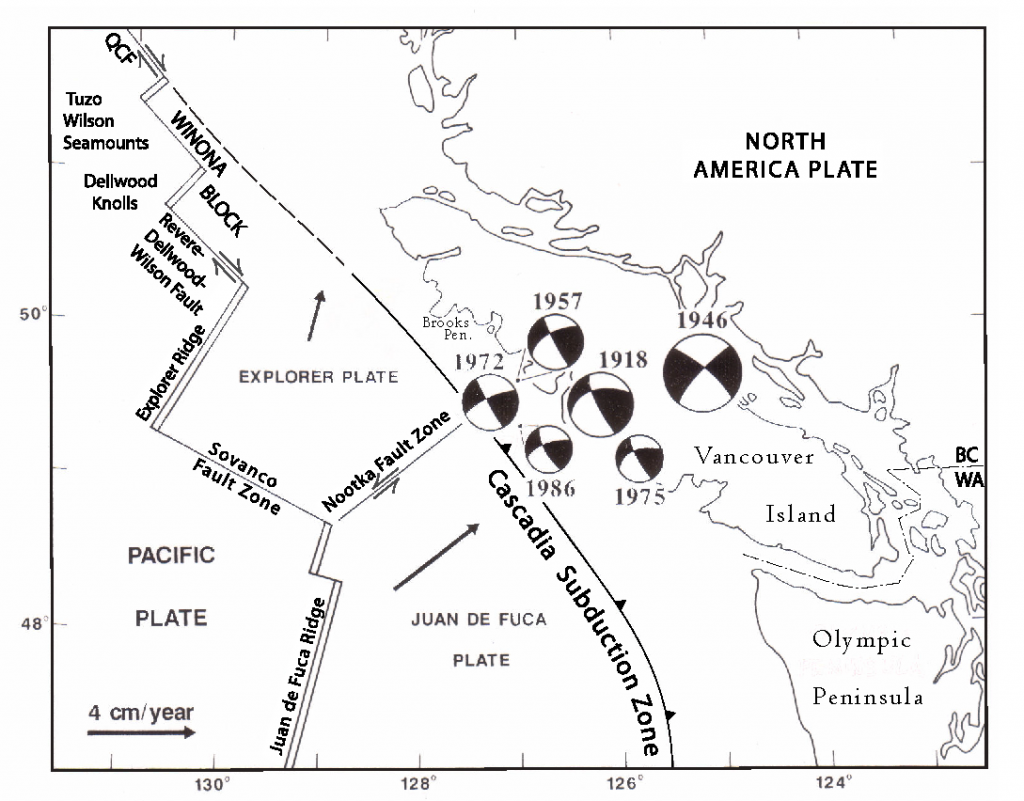
The 1946 earthquake produced extensive chimney damage in Campbell River, Courtenay, and Comox, and there were many landslides in the mountains and liquefaction and slumping of coastal sediment. Despite extensive areas of intensity VIII from Campbell River to Courtenay, only one person was killed when his boat at Deep Bay was swamped by a wave, possibly generated by slumping of sediment into the water.
The 1918 earthquake struck along the primitive west coast of Vancouver Island, damaging the lighthouse at Estevan Point, south of Nootka Sound. The area of highest intensity was thinly populated, with widely scattered fishing villages accessible only by boat, and damage was slight. The focus of the earthquake was about ten miles deep, and intensities up to VI were recorded. It was felt as far away as Seattle and the town of Kelowna in the Okanagan Valley east of the Cascades.
The seismograms of both earthquakes, as recorded at distant stations, show that the motion was consistent with left-lateral strike slip on a crustal fault (or faults) striking northeasterly. This is the same strike as the Nootka Fault, a major left-lateral strike-slip transform fault on the deep ocean floor west of the continental slope, a fault that forms the boundary between the Juan de Fuca Plate and the Explorer Plate (Figure 6-19). However, the earthquakes are not located directly on the landward projection of the Nootka Fault but are offset about forty miles to the east.
The more heavily populated regions of Vancouver and Victoria experience quite a few small earthquakes, indicating that the region is a northern continuation of the seismically active crust beneath Puget Sound. This poses a dilemma for seismologists such as Garry Rogers of the Pacific Geoscience Centre in Sidney, B.C., concerned about estimates of seismic hazards in these areas. Should Rogers and his colleagues consider that earthquakes as large as the 1946 event, M 7.3, are possible in Vancouver or Victoria, or anywhere else in the shallow continental crust of southwestern British Columbia? Or should they conclude that the large crustal earthquakes in central Vancouver Island are part of a zone that has an unusually high seismic hazard because of its proximity to the offshore Nootka Fault, thereby reducing the perception of hazard to Vancouver and Victoria? The answers to those questions are not yet at hand.
8. Eastern Washington and Northeastern Oregon
John McBride and his partner, Jack Ingram, were in trouble with the law. Contemporaries referred to them as “border ruffians . . . scoundrels who for pure cussedness could not be excelled anywhere on the border,” probably a compliment in the Washington Territory in 1872. Things had started out well; they had set up the first trading post in Wenatchee. But they were caught selling liquor to the Indians, and this got them arrested in Yakima. They bribed the prosecutor and were set free, but John McBride was then rearrested by federal marshals in Walla Walla, and he posted bond. He and Ingram had sold the trading post and were living in a cabin west of the Columbia River near the Wenatchee River while awaiting trial.
In the early morning hours of December 15, 1872, they were awakened by a loud noise, as if the stove had fallen over. As they were pulling on their clothes, they were thrown to the floor, and they realized that they were experiencing an earthquake. They made their way to the Wenatchee trading post, six miles away, where they found the new owners in a state of confusion, with sacks of flour thrown about and damage to the roof and upper logs of the cabin and to the kitchen. Great masses of earth came down from the hills, and the gulches were filled with debris. A group of Spokane Indians crowded around the white settlers, crying out that the world was coming to an end.
North along the Columbia River, a fifteen-year-old Indian boy, Peter Wapato, told of a landslide at Ribbon Cliff near Winesap (present-day Entiat) that dammed the Columbia River for several hours. This landslide was also reported by the Indians to a settler, Elizabeth Ann Coonc, camped downstream. Decades later, geologist I. C. Russell of the USGS would describe this landslide at a place that became known as Earthquake Point. The Indians called it Coxit (Broken-off) Point.
Chilliwack and Lake Osoyoos, B.C., and Snoqualmie Pass and Kittitas Valley, Washington, reported intensities of VII. Port Townsend, Seattle, Olympia, Vancouver, and Walla Walla, Washington, and Victoria, B.C., experienced intensities of VI.
A century later, the 1872 earthquake was the subject of great speculation because of plans for nuclear power plants by the Washington Public Power Supply System and Seattle City Light. The epicenter was variously located in the north Cascades, in the western foothills of the north Cascades, even in British Columbia, with magnitude estimates as high as 7.4. Bill Bakun of the USGS and his colleagues used the distribution of felt reports to locate the epicenter near Entiat and to estimate the magnitude as MI 6.8 (see Chapter 3 and Figure 2-6a), which made it the largest historical crustal earthquake in the Pacific Northwest except for Vancouver Island.
No source fault has been found. The eastern edge of the north Cascades near the Columbia River continues to be a source of small earthquakes, including an earthquake of M 5-5.4 on August 5, 1951, near Chelan. If there is something special about the Entiat region that should cause it to be more seismogenic than other areas, it is not known what it is.
On June 25, 2001, Spokane was rattled by a very shallow magnitude 3.7 earthquake that was followed by several aftershocks lasting into August. The distribution of the aftershocks suggested that they originated on a fault called the Hangman or Latah Creek fault, although no surface rupture related to these earthquakes was found. Such earthquakes are referred to as anearthquake swarm, in which there is a series of small earthquakes rather than a main shock. Another earthquake swarm was recorded in 1987 in the Columbia Plateau near Othello, Washington, with more than two hundred events over a period of about a year. Like the 1872 earthquake, these could not be assigned to a specific fault.
The largest earthquake to strike northeastern Oregon shook the Milton-Freewater area shortly before midnight on July 16, 1936 (Figure 6-20). This earthquake has been given a magnitude as high as 6.1 and maximum intensity of VIII, although a recent study assigned it an intensity magnitude of MI 5.1 to 5.5 and maximum intensities of only VI. It was preceded by two foreshocks and followed by many aftershocks. Damage was reported in Milton-Freewater, Umapine, and Stateline, Oregon, and it was strongly felt in Walla Walla, Washington. Chimneys were damaged, houses were moved off their foundations, and liquefaction and landsliding were reported.
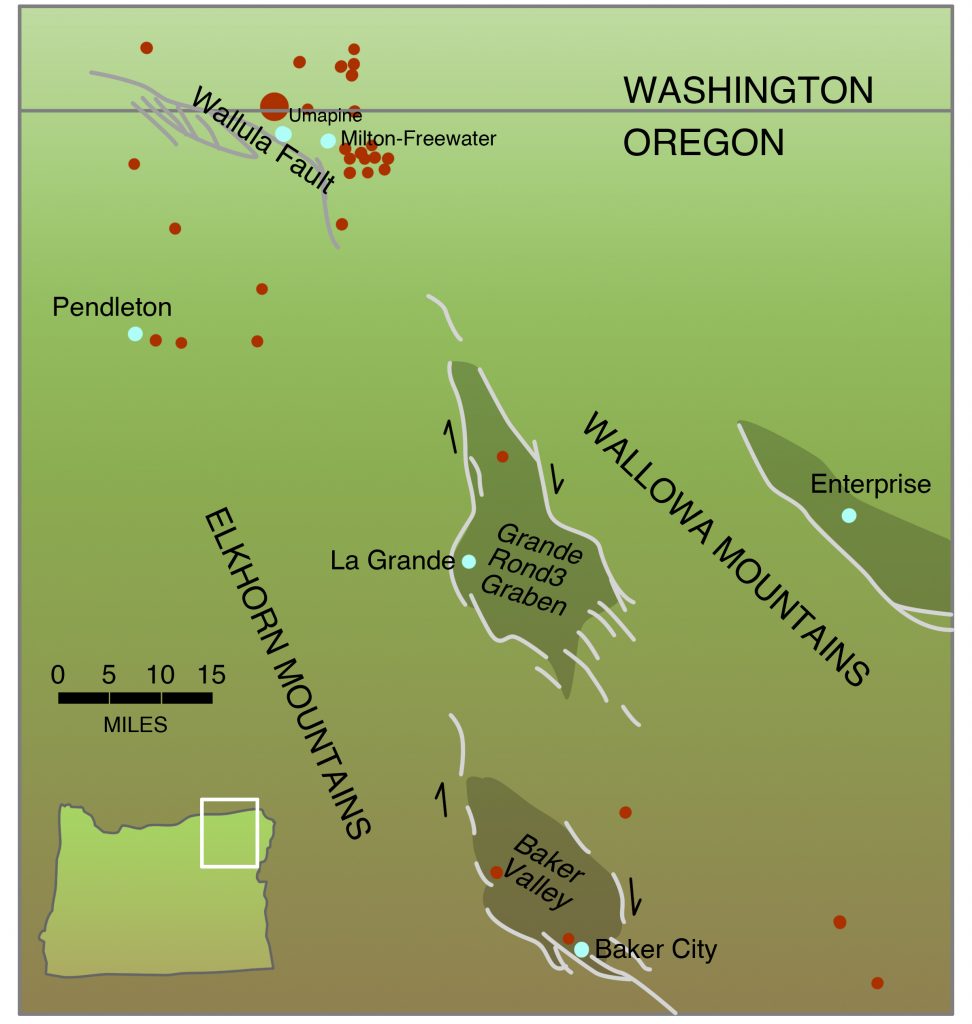
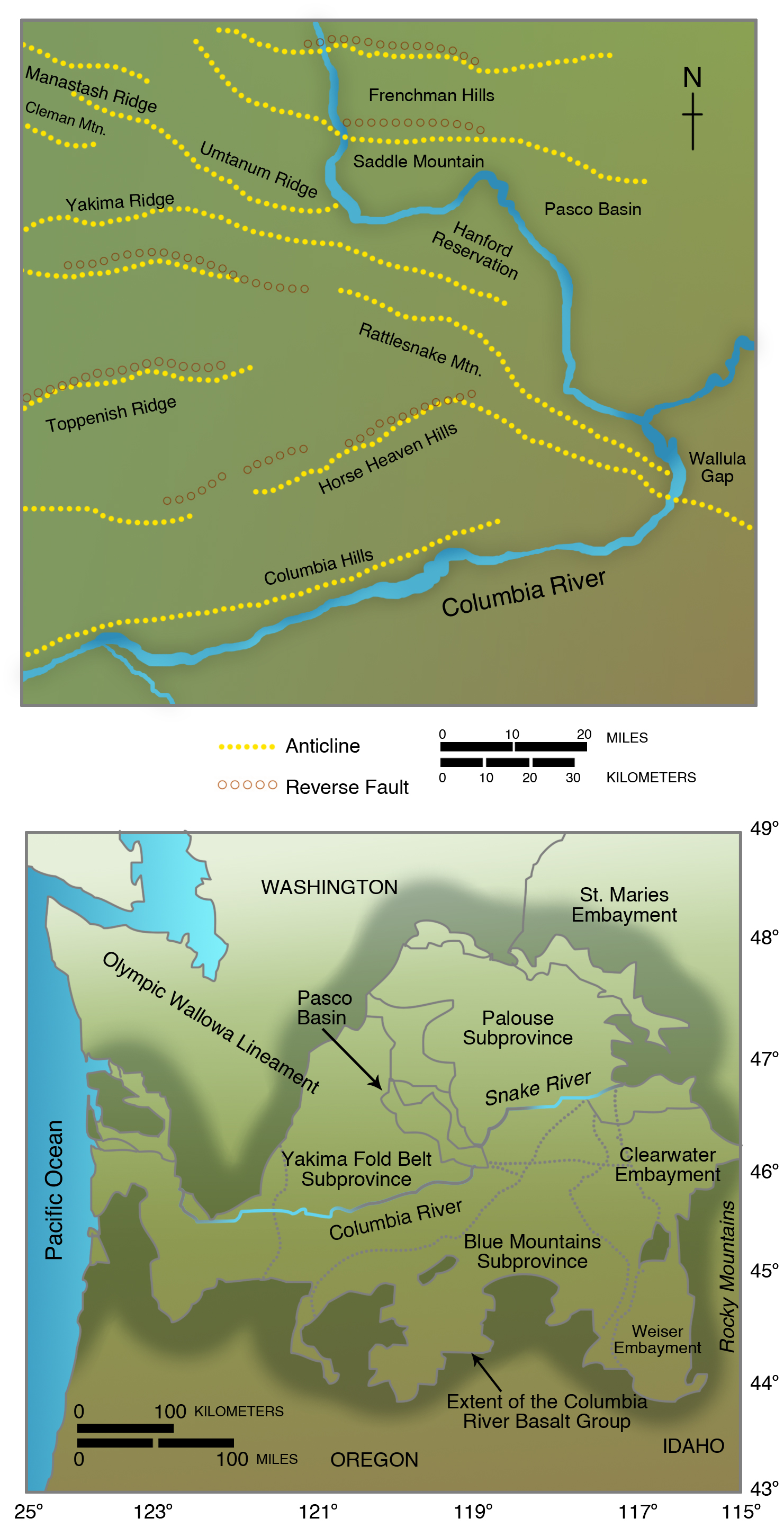 |
As in the previous examples, no source fault was immediately found. But in this case, a possible culprit has been identified: the Olympia-Wallowa Lineament, otherwise known as the OWL (Figure 6-21). This subtle structural alignment can be traced from the Olympic Peninsula across the Cascades and Hanford Reservation to the Wallowa Mountains in northeastern Oregon. Geologists have had difficulty in mapping the OWL on the ground, even though a straight-line feature can be observed from space (Fig. 6-22). However, geology students from Whitman College at Walla Walla found evidence that a branch of this structure may cut deposits only a few thousand years old. The Wallula Fault Zone cutting the Columbia River Basalts near Milton-Freewater could be part of the OWL (Figure 6-21), and one branch, the Umapine Fault, may have evidence of Holocene activity.
The southeast end of the OWL is the linear northeast range front of the high Wallowa Mountains, Oregon’s version of the Swiss Alps, although glacial moraines 140,000 years old do not appear to be cut by a range-front fault. Other faults mark the boundaries of basins within the Blue Mountains, including Grande Ronde Valley containing the city of La Grande, and Baker Valley containing Baker City (Figure 6-20). The Baker Valley Fault at the base of the Elkhorn Mountains has evidence of Late Quaternary (although not Holocene) displacement. The West Grande Ronde and East Grande Ronde faults also have evidence of Late Quaternary movement. Both faults are expressed in tectonic topography. Farther southeast, other faults coincide with a zone of high seismicity near the Snake River in both Oregon and Idaho.
9. The Pasco Basin: Nuclear Wastes and Earthquakes
The military aircraft droned over the bleak December landscape of eastern Washington, and its lone passenger took note of what he saw through the window. As he gazed down at the sagebrush-covered Hanford Reach, with the broad ribbon of the Columbia River curving away in the distance, Lt. Col. Franklin Matthias knew that he had the site he wanted: raw desert, virtually unpopulated, but with a dependable water source, the Columbia River, close at hand (Figure 6-22). The nearest large city, Spokane, was nearly one hundred and twenty miles away. Matthias would report back to his superior, General Leslie Groves, military overseer for the top-secret Manhattan Project, that Hanford was suitable for a large super-secret government operation related to the war effort. The year was 1942.
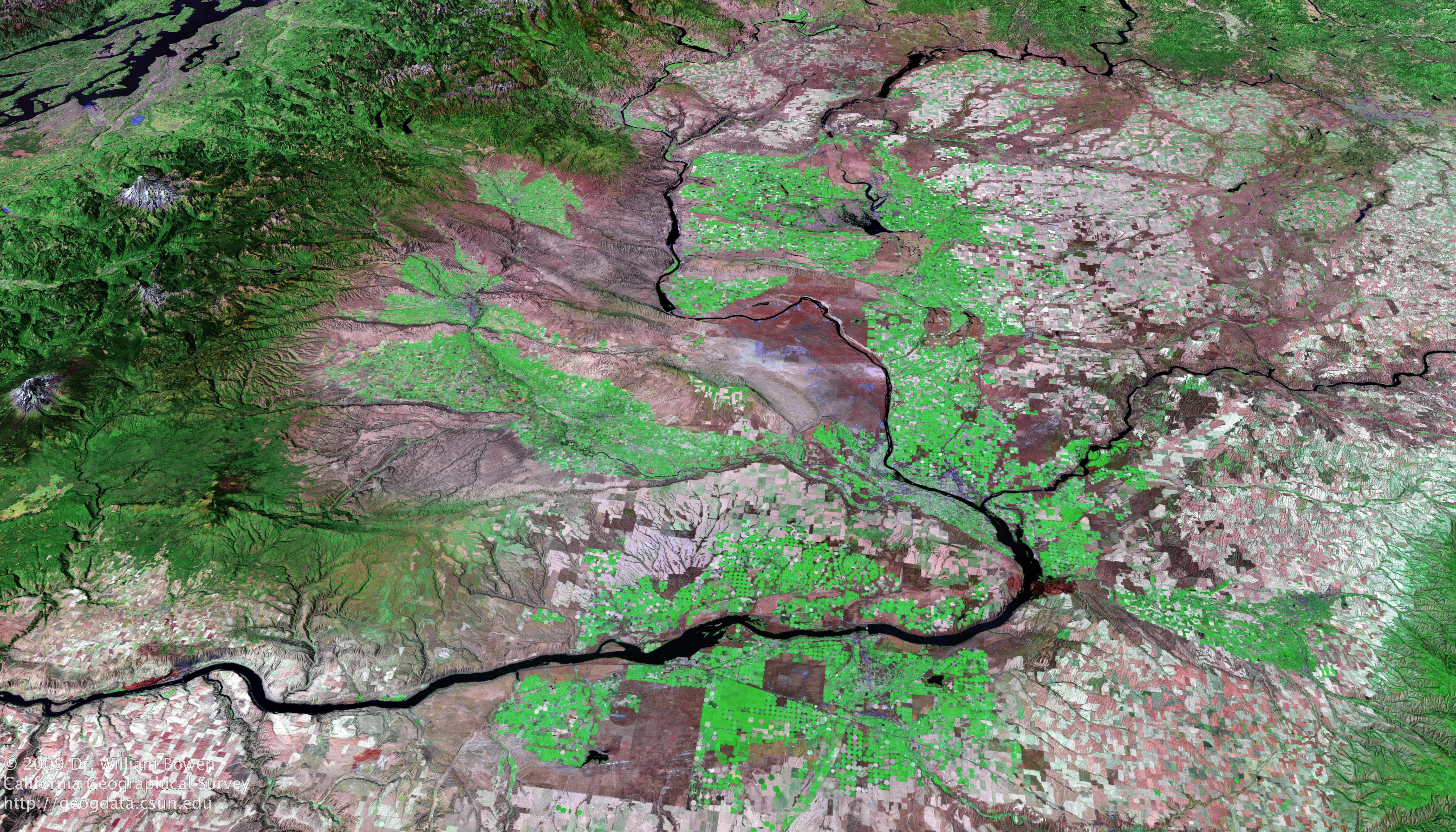
Soon after, in 1943, the few Indians and farmers who had been scratching out a living in the Hanford Reach were hustled out, and the government took over for a crash project to manufacture plutonium for an atomic bomb, the first of which would be dropped two years later on Nagasaki, Japan, bringing an end to World War II. Then came the Cold War, and Hanford continued to expand, still in secrecy, bringing jobs and prosperity to the Pasco Basin and the Tri-Cities of Richland, Pasco, and Kennewick. In addition to manufacturing plutonium, atomic reactors produced energy for the Bonneville power grid, and nuclear wastes began to be stored on the Hanford Reach.
In the 1980s, the site was proposed as a national nuclear waste dump, the Basalt Waste Isolation Project. By this time, though, serious reservations had been expressed about nuclear waste disposal in general and the Hanford site in particular. The Hanford N Reactor and the plutonium manufacturing facilities were shut down, and later, the proposed waste disposal site was shifted to Yucca Mountain in Nevada.
But still the legacy of nuclear wastes already stored at Hanford hangs over the Tri-Cities, and so it is useful now to look at the geologic setting and consider Hanford’s hazard from earthquakes. Clearly, geology and earthquakes were not considered at all in Col. Matthias’s report to General Groves. Now, however, a nuclear reactor is considered to be a critical facility, meaning that it is necessary to conduct exhaustive site studies to determine its long-term stability to hazards, even those that might be very unlikely, including earthquakes. Are the reactors and the plutonium manufacturing plants able to withstand earthquake shaking? Would highly toxic radioactive waste stored in subterranean tunnels leak out following a major earthquake? To answer these questions, we look for evidence for past earthquakes in the geology around the site, especially in the long ridges of basalt known as the Yakima Folds (Figure 6-23).
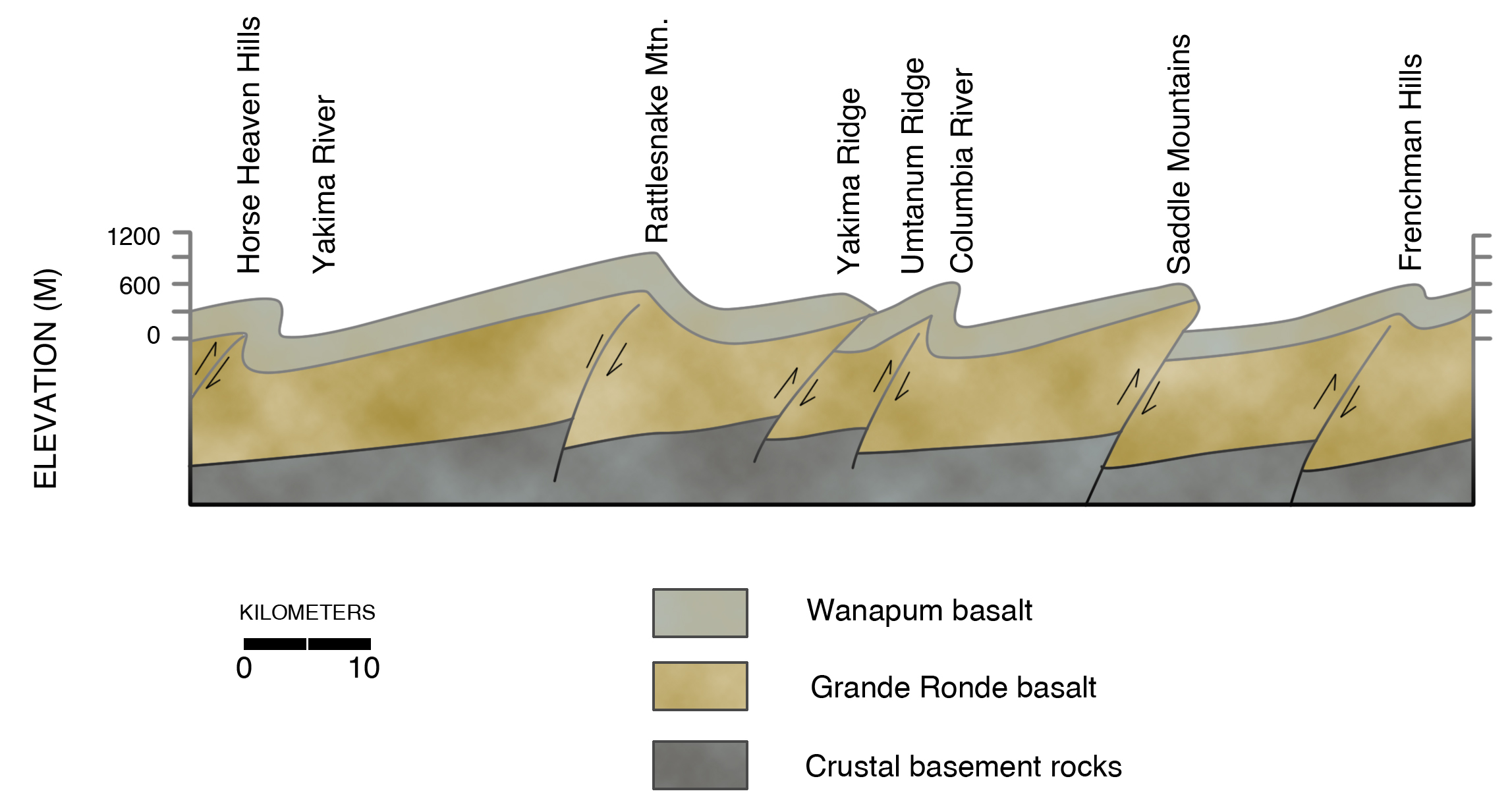
Between Wenatchee and Hanford, the Columbia River turns southeast through a sagebrush-covered black-rock wasteland, away from the ocean, to cut a succession of gorges through basalt ridges on its way to the last canyon, Wallula Gap, where it turns sharply back on itself and heads west to Portland (Figures 6-21, 6-22). These basalt ridges, Frenchman Hills, Saddle Mountain, and Rattlesnake Mountain, are anticlinal folds in the Columbia River Basalt, crumpled like a heavy carpet after a sofa has been pushed over it (Figure 6-23). The Columbia has eroded through these anticlines as they formed. The anticlines are best seen in the canyon of the Yakima River between the towns of Ellensburg and Yakima—not from Interstate 82, which soars high over the gorge, but on lonely State Highway 821, which twists along the banks of the Yakima as the river lazes across broad synclines and churns through anticlinal cliffs of basalt.
Project managers working at the Hanford Nuclear Reservation tended to downplay the role earthquakes may have had in forming these anticlinal ridges, perhaps from wishful thinking, perhaps because they did not want to answer questions they had not been asked. One theory was that the anticlines formed millions of years ago, during or soon after the eruption of basalt, and were no longer active or an earthquake risk.
In fairness to the geologists and managers at Hanford, anticlines were not considered as harbingers of earthquakes until 1983, when an earthquake of M 6.7 trashed the downtown section of Coalinga, California, a small town on the west side of the San Joaquin Valley. There was no active fault at the surface at Coalinga, but the forces accompanying the earthquake were shown to add to the folding of an anticline at the surface. The implication of active folding is that the fold is underlain by a blind reverse fault orblind thrust, one that does not reach the surface, but tends to force one block over another: faulting at depth, but only bending at the surface (Figure 3-10b). The 1994 Northridge California, Earthquake was caused by rupture on a blind thrust.
I once saw a Volkswagen bus that had been in a highway accident. There had been a carpet on the floor, as if its owner had been camping inside the bus. During the wreck, the flooring was buckled and broken, but the carpet was still continuous over the flooring, although it had a large hump in it over the break in the flooring. I thought about that VW bus as I studied the Northridge Earthquake—the bump in the carpet was the anticline, giving a silent clue to the unseen fault beneath. The same analogy could be made for the basalt ridges in the Pasco Basin.
Two college teachers, Bob Bentley of Central Washington University in Ellensburg and Newell Campbell of Yakima Valley College, trudged into Yakama Indian territory to examine Toppenish Ridge, a narrow anticline south of the city of Yakima (left center, Figure 6-21, top). They found normal faults on the crest of the anticline and reverse faults on its north flank where the anticline had been thrust northward toward the plowed fields of the Yakima Valley. These structures are not the same age as the Columbia River Basalt; they are much younger, possibly still active. Similar evidence later showed that the east end of the Saddle Mountain Anticline, east of the Columbia and north of Hanford, is also active. As shown in Figure 6-23, the prominent anticlines overlie and provide evidence for blind reverse faults beneath, faults that themselves could produce large earthquakes at the nuclear reservation.
The Olympia-Wallowa Lineament (OWL) traverses southeast across the Hanford Reach and across the Yakima folds. Although it is visible on satellite images and on computer-generated digital topographic maps (Figure 6-22), its earthquake significance is unclear.
In summary, as Hanford’s nuclear operations change into environmental cleanup mode, and the Tri-Cities await their fate, an earthquake assessment seems long overdue. The Hanford installation is not the only critical facility in the Pasco Basin; there are also the Wanapum, Priest Rapids, and McNary dams on the Columbia River. Failure of one of these dams could cause a repeat of the catastrophic floods of the Pleistocene, although on a greatly reduced scale. Critical facilities will be considered in a later chapter.
10. Basin and Range: the Klamath Falls Earthquakes of 1993
Vacations in their native Oregon were a tradition with Ken and Phyllis Campbell. They came at a time when they could avoid the hottest part of the summer at their home in Phoenix, Arizona. Their 1993 excursion had been a grand trip, visiting old high-school friends and taking a cruise ship up the Inside Passage to Alaska. But it was getting late, and Phyllis was anxious to reach their destination, a bed and breakfast in Klamath Falls, a city where she had gone to first grade. Ken was already looking forward to getting back to Phoenix, where he was constructing a workshop to restore classic cars and build toys for his grandchildren. Driving south on U.S. Highway 97 toward Klamath Falls, Phyllis watched the deer along the side of the road.
As they approached Modoc Point, a steep cliff beside the road, it occurred to Phyllis that she wouldn’t see any deer on the left side of the highway because the cliff came right down to the road, and there was no shoulder. Suddenly she saw a blinding flash of light, then another one, and she thought for an instant that it must have been transformers exploding from a power surge.
At that instant, there was a loud crack, and Phyllis heard Ken cry out, “No!” A fourteen-foot boulder smashed down onto their pickup, killing Ken instantly. The windshield collapsed inward, and the truck spun out of control. When the spinning stopped, Phyllis found that she could unhitch her seat belt, but not Ken’s. Nothing worked: she couldn’t get the electric windows to open or the electric locks on the door to work, even though the engine was racing. She tried to turn off the ignition, but the key came off in her hand. She knew that Ken had to be dead, but she did not know how to get out of the truck. Then there was a man at the window, and she was pulled to safety.
The deadly boulder and the breached highway barrier are shown in Figure 6-24.
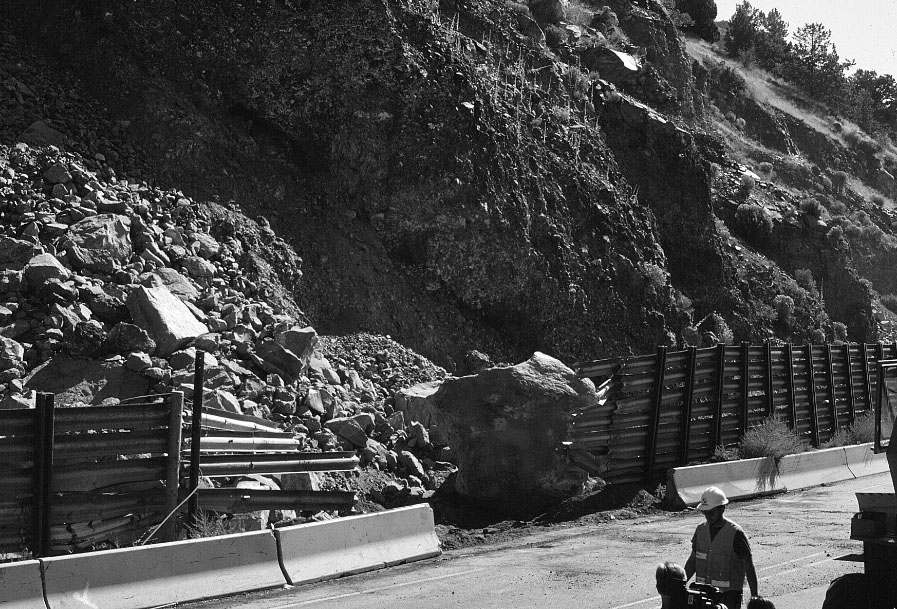
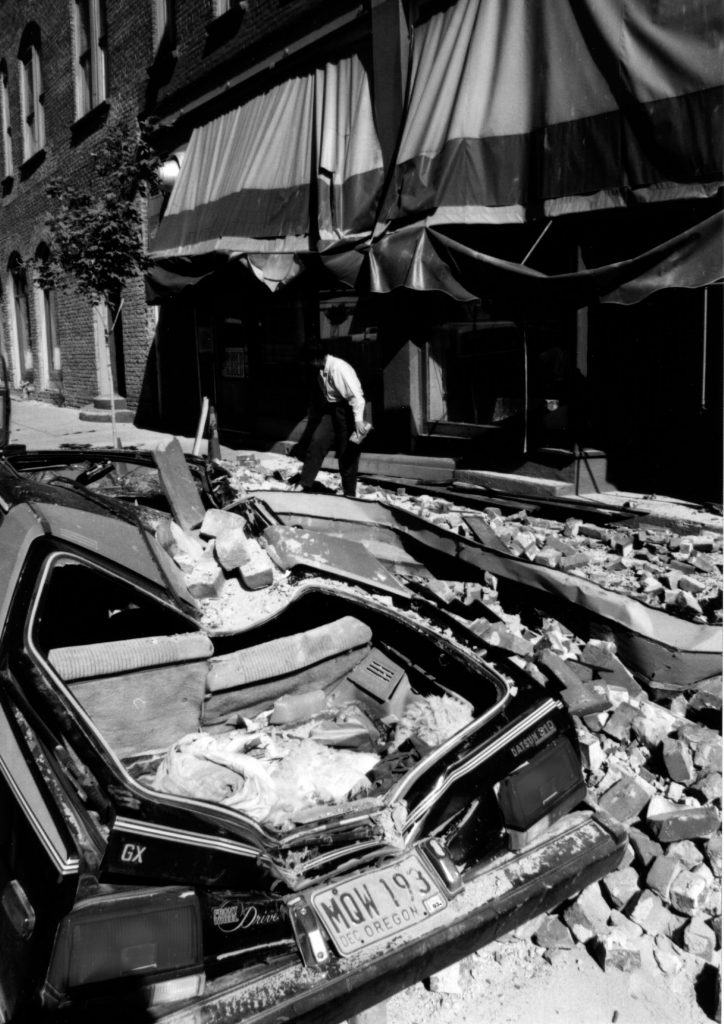
At 8:28 p.m., September 20, 1993, Ken Campbell had become the first fatality caused by an earthquake in Oregon. An eighty-two-year-old woman, Anna Marion Horton of Chiloquin, died of a heart attack because she was frightened by the violent shaking of her house. At the Classico Italian restaurant in downtown Klamath Falls, bricks fell and blocked the sidewalk, and diners left their pasta uneaten and fled the building.
More than a thousand buildings were damaged (Figure 6-25), with a total loss of more than $7.5 million. The Klamath County Courthouse, built in 1924, and the Courthouse Addition suffered damage of more than $3 million. Unreinforced masonry buildings suffered the worst; well-built wood-frame houses that were bolted to their foundations fared relatively well.
There had been a warning twelve minutes before: a foreshock of magnitude 3.9. However, this part of Oregon was poorly covered by the existing network of seismographs, and there was no system in place to evaluate the foreshock and issue a warning. Then, more than two hours after the first shock of magnitude 5.9, an even larger earthquake of magnitude 6 struck the region. The depth of the earthquakes was about six miles, much shallower than the Scotts Mills Earthquake. They were located west of Upper Klamath Lake beneath the Mountain Lakes Wilderness, between fifteen and twenty miles west-northwest of Klamath Falls (Figure 6-26). Starting in early December, a new swarm of earthquakes began east of the first group, close to the western shore of the lake, closer to Klamath Falls (Figure 6-26). After the first of the year, the aftershocks slowly began to die away.
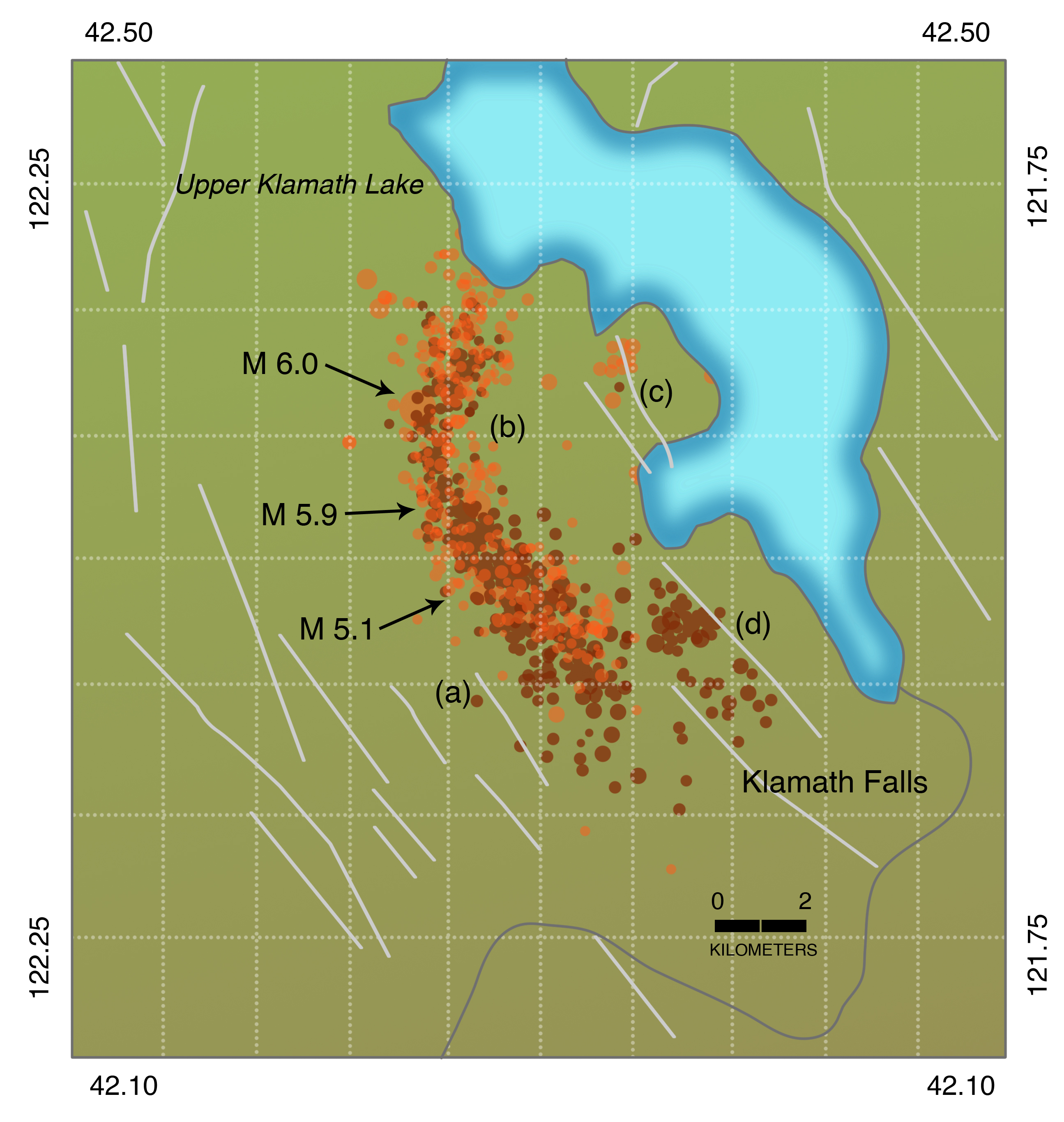
Unlike the country west of the Cascades, the stark, arid landscape of southeastern Oregon leaves little of its geology to the imagination. Dave Sherrod of the USGS had been mapping the faults of the Klamath Falls region for several years, and early in 1993, before the earthquake, he had met with Klamath Falls officials to discuss the hazard.
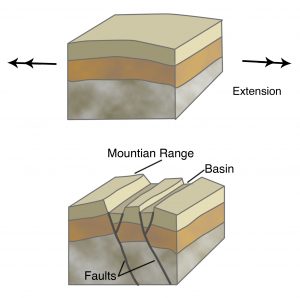 |
The basin containing Upper Klamath Lake and Klamath Falls is a graben, downdropped between faults that dip downward toward and beneath the lake. These are called normal faults, and they result when the crust is pulled apart (Figures 3-10a, 6-27). Modoc Point, where Ken Campbell met his death, is part of a fault block. Over hundreds of thousands of years, the countryside east of Highway 97 has been uplifted, and the lowland to the west downdropped along west-dipping faults, so that it now lies beneath the lake. Farther south, other normal faults extend through the main part of Klamath Falls.
West of Upper Klamath Lake are other less prominent normal faults at the west edge of Howard Bay, in the Mountain Lakes Wilderness, and extending beneath Lake of the Woods (Figure 6-26). These faults, which dip east, were activated by the 1993 earthquakes, although there is no evidence that any of them ruptured all the way to the surface.
Fortunately for Klamath Falls, the faults on the west side of the graben ruptured rather than the faults on the east side, which extend directly through the city. If the east side faults had ruptured with earthquakes of comparable magnitudes, the damage to Klamath Falls, with its unreinforced masonry buildings, would have been disastrous, resulting in many deaths.
Eastward from the Cascades from Bend and Klamath Falls to the Owyhee River country stretch the block-fault mountains and the dry-lake grabens that make up the Oregon Basin and Range: Green Ridge and Walker Rim, Summer Lake and Winter Ridge, Lake Abert and Abert Rim, and finally, higher than all the rest, and with evidence of Pleistocene glaciers, Steens Mountain, followed by the Alvord Desert (Figure 6-28).
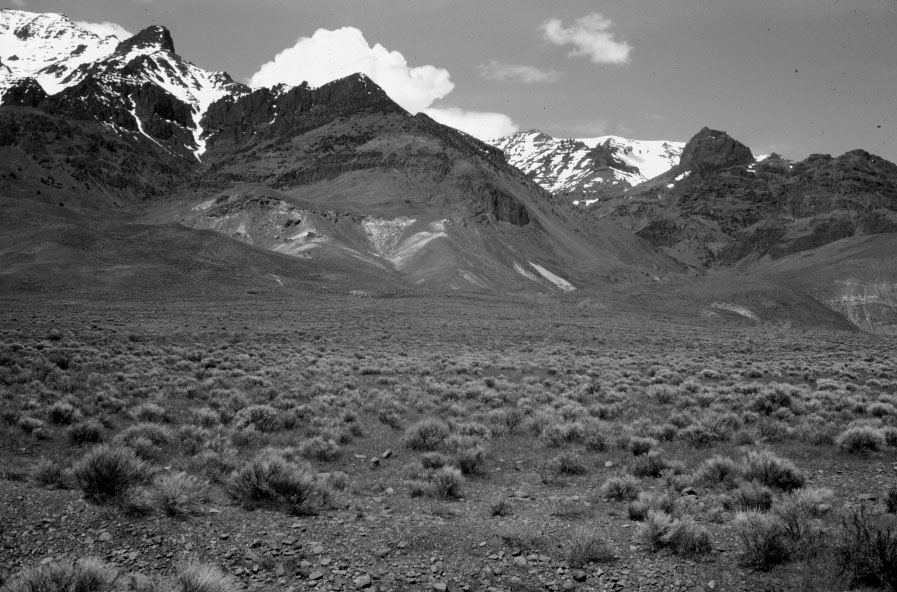
Mark Hemphill-Haley, then with Woodward-Clyde Consultants, found a fault at the foot of the Steens, snaking along the west edge of the Alvord Desert Graben. The Steens Mountain Fault shows geological evidence of a Holocene earthquake within the last ten thousand years, based on trench excavations. Hemphill-Haley could then conclude on the basis of geologic evidence alone that the fault at the foot of the Steens is activein the legal sense of the word, which means that special precautions should be taken to guard any major structures against seismic shaking. Fortunately, there are only a few ranches and herds of livestock, and they would probably survive a magnitude 7 quake without much problem.
Hemphill-Haley had the answer to why Steens Mountain is there in the first place. It has been gradually raised up from the desert floor along its range-front fault, accompanied by literally thousands of earthquakes over a period of millions of years, each earthquake lifting the mountain up just a few feet. The cumulative effect of all these individual uplifts is the massive, rugged fault-block mountain we see today, snow capped much of the year, towering over the playa flats of the Alvord Desert to the east (Figure 6-28).
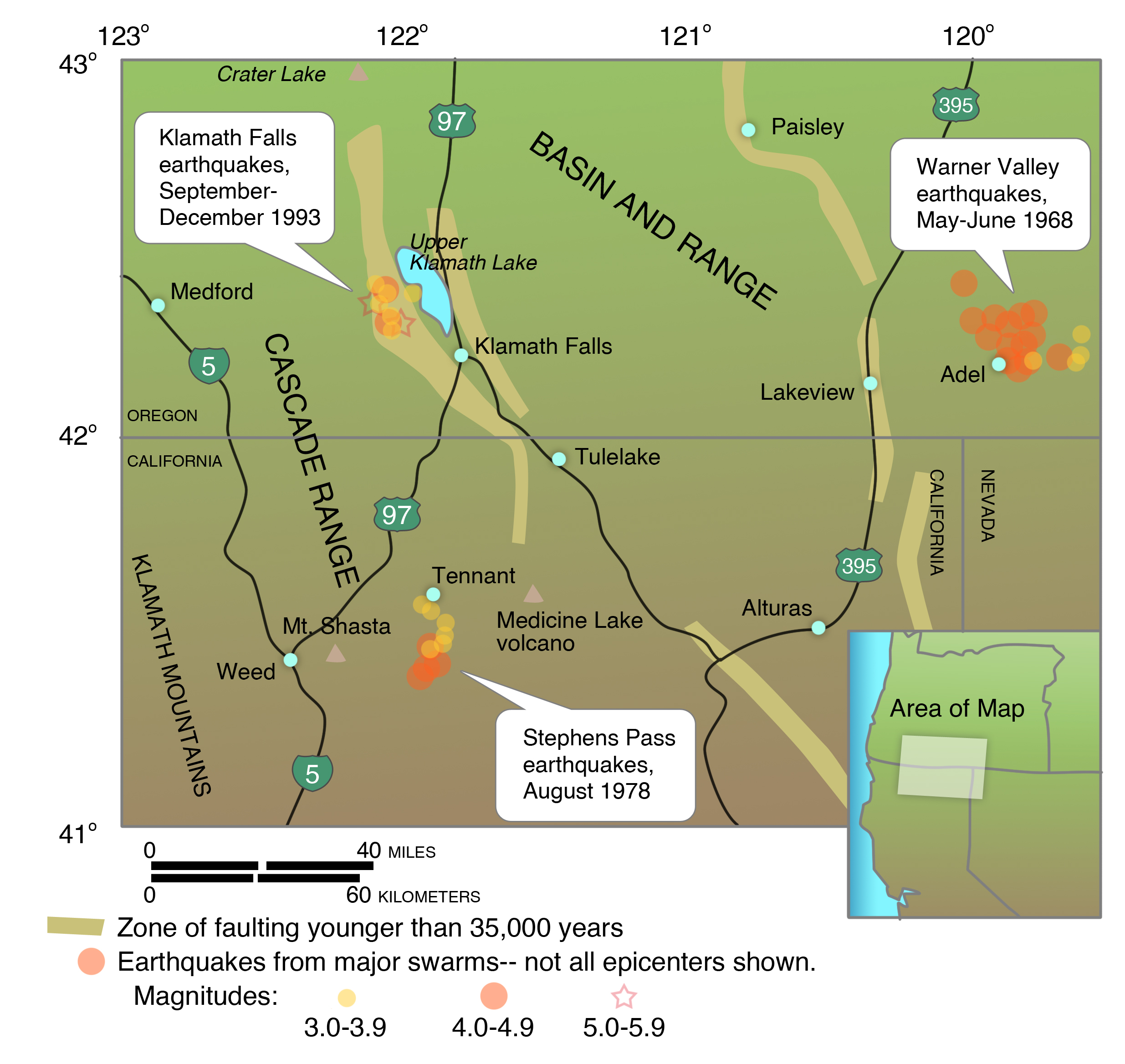
West of Steens Mountain, a swarm of earthquakes struck the small town of Adel, in Warner Valley, in 1968, with the largest of magnitude 5.1 (Figure 6-29). Silvio Pezzopane and Ray Weldon of the University of Oregon found other active faults in the desert west of Abert Rim, and they applied the new science of paleoseismology to find evidence of prehistoric earthquakes in backhoe trenches across fault scarps. Faults that are active on the basis of offset Holocene deposits were found in Paulina Marsh, at the west edge of Summer Lake near Winter Rim, and along the west boundary of Abert Rim. Normal faults in eastern Oregon are seen on computer-generated topographic images, including faults in and near Bend, Oregon (Figure 6-30). (The Bend fault scarps may be active, but faulting involves sediments in part derived from Cascade volcanoes to the west, and they might be due to resistance to erosion of volcanic-derived sediments rather than Holocene faulting.)
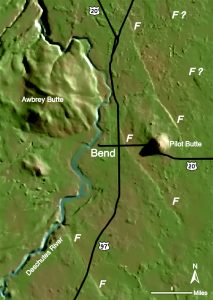
The Oregon Basin and Range is the northern continuation of the Basin and Range of Nevada (Figure 6-31), including the Central Nevada Seismic Zone, which was rocked repeatedly by a series of eight earthquakes, starting in 1903 and ending in 1954, the largest of magnitude 7.5. Fault scarps that formed during several of these earthquakes are magnificently preserved in the desert climate (Figure 3-7) and can be seen by driving a back road south of Winnemucca, Nevada, through Pleasant Valley at the western foot of the Sonoma and Tobin ranges, over the Sou Hills, down Dixie Valley east of the Stillwater Range, to U.S. Highway 50, itself broken by a surface rupture accompanying an earthquake of magnitude 7.2 on December 16, 1954. Like the Steens country, the Central Nevada Seismic Zone is thinly populated, and although the earthquakes were felt over large areas, the losses were small.
Despite the intense seismic activity in this century, long-term slip rates on faults in the Central Nevada Seismic Zone are extremely slow, comparable to slip rates on faults in the Oregon Basin and Range. Paleoseismology shows that prior to the twentieth century, earthquakes occurred many thousands of years ago. We refer to the Nevada earthquakes of the twentieth cenury as an earthquake cluster, characterized by intense activity over a short period of time separated by thousands of years of quiet. The Oregon Basin and Range is similar to the Central Nevada Seismic Zone, but its seismic silence shows that it is in a quiet period. We know that this quiet period will end someday, but we do not know when—tomorrow or thousands of years from now. Sadly, forecasts made in terms of many thousands of years do not answer the societal questions about timing (next year or fifty years from now?) that are of interest to you and me and those around us.
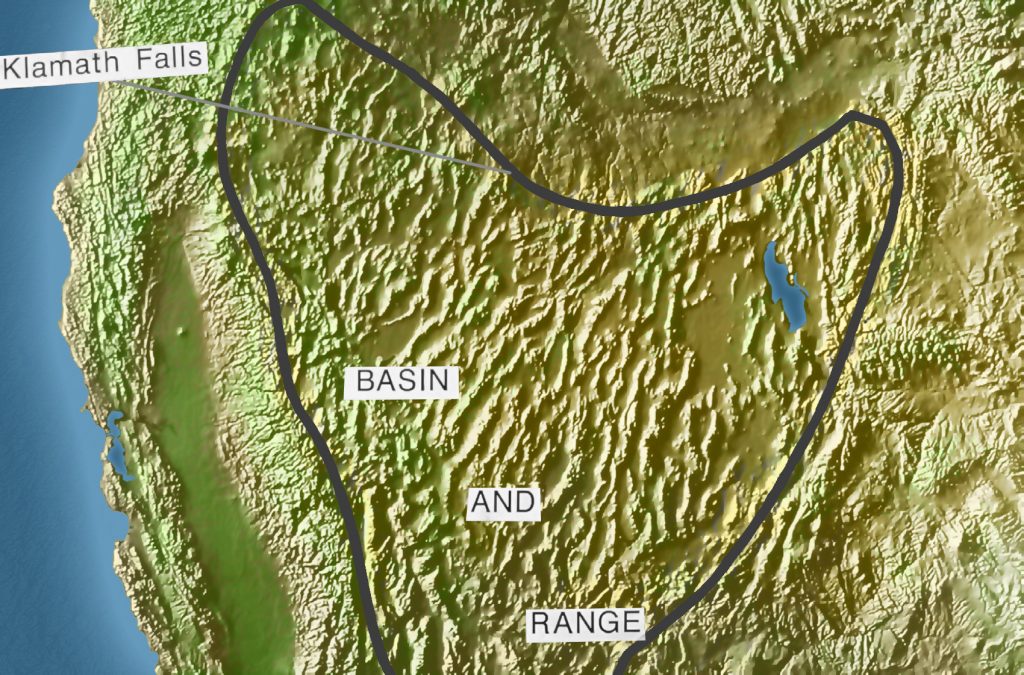
11. Pacific Coast and Offshore
The Northwest coastline is struck on occasion by winter storms of great ferocity, among the most violent in the world. The ocean waves that crash against the rocky headlands and from time to time across Highway 101 are agents of geologic change. They grind down rocky platforms and tide pools and eat into the base of the sea cliffs, occasionally causing beachfront homes and condos built on top of the cliffs to topple into the sea. The boundary between the rocky platform and the sea cliff is called the shoreline angle (Figure 6-32), and it is formed at sea level.
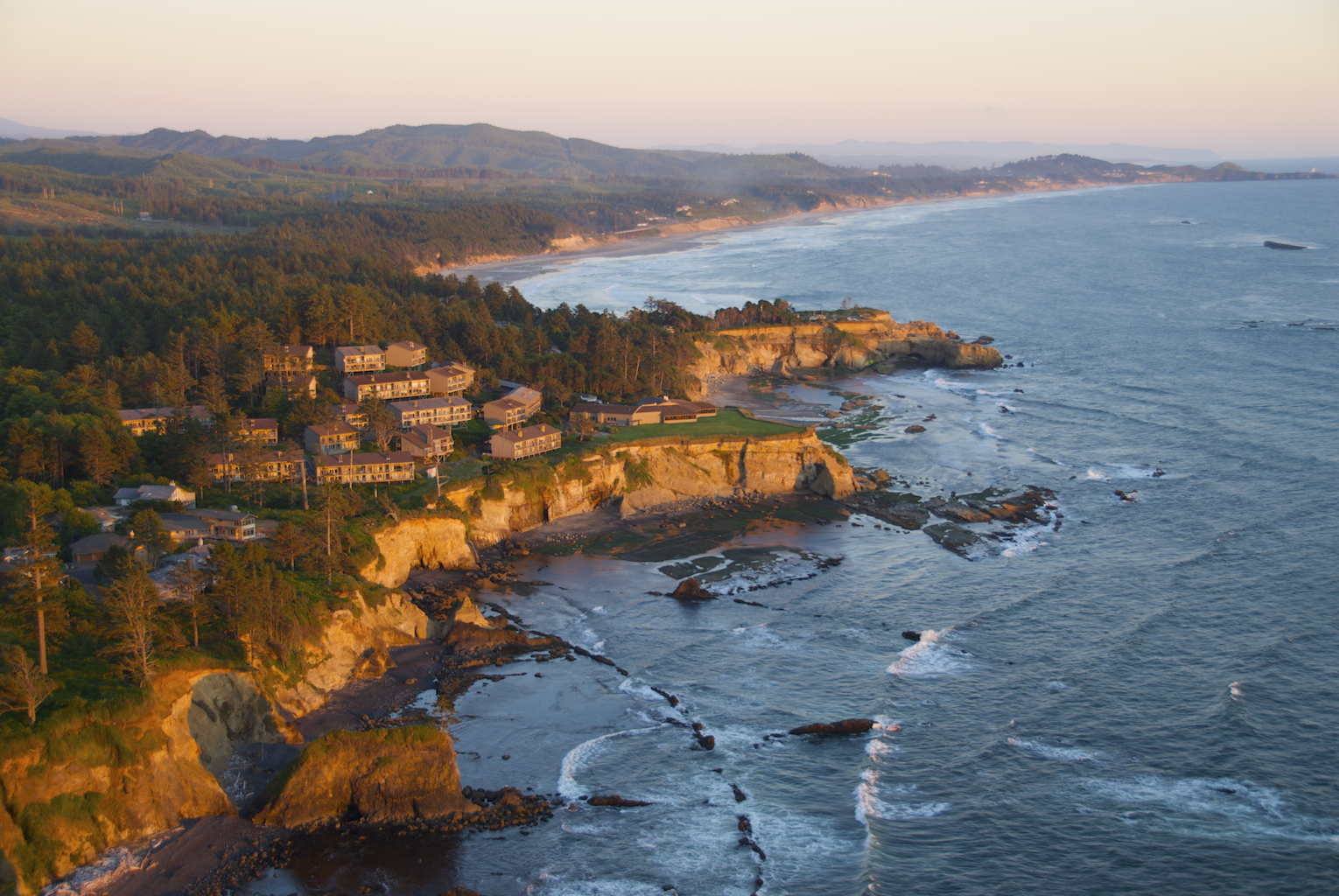
Highway 101 and many of the resort cities and fishing villages of the coast rest on older, higher sand-covered marine platforms that were eroded during the late Pleistocene. A marine platform 125,000 years old marks a time when sea level was as much as twenty feet higher than it is today. At places like Cape Arago, Oregon, several of these platforms of different ages lie at different elevations, like giant stair steps, the oldest more than two hundred thousand years old. The shoreline angles of these old marine platforms indicate the position of ancient Pleistocene sea levels. Careful surveying by Harvey Kelsey of Humboldt State University in Arcata, California, and his colleagues and students shows that these shoreline angles are not horizontal, like the modern one is, but they rise and fall, and in some places are cut by faults (Figures 6-33). Because the shoreline angles reflect ancient sea levels, meaning that they were once horizontal, their deformation allowed Kelsey to measure tectonic crustal deformation along the Pacific coast.
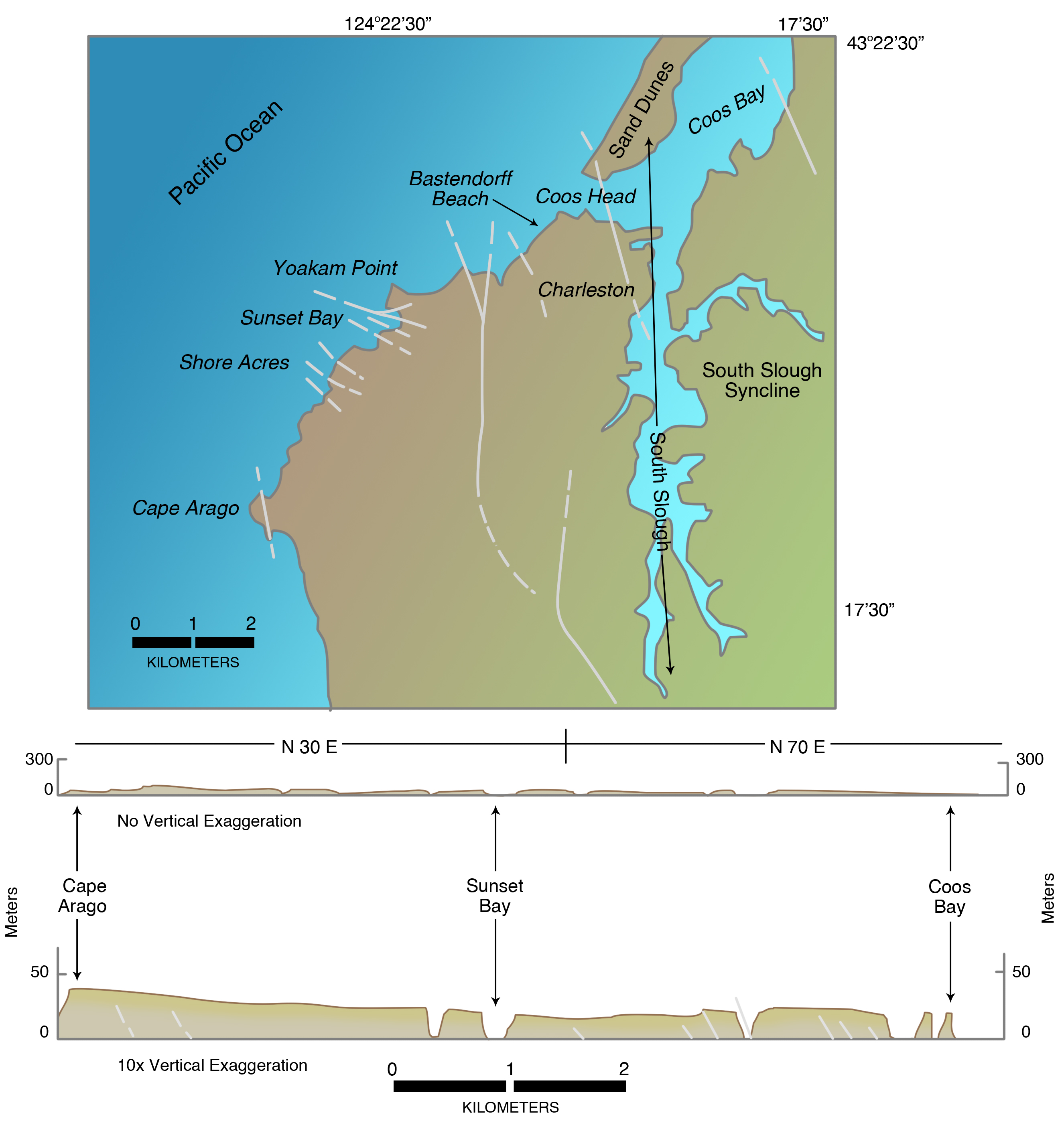
The seismicity of the coastal regions north of California is relatively low, and there is no direct evidence that the formerly horizontal shoreline angles were deformed by earthquakes. Deformed marine terraces have been described by Lisa McNeill of Oregon State University (now at Southampton University in England) and Pat McCrory of the USGS. McNeill found that some of the downwarps along the coast, such as South Slough near Coos Bay, Oregon, and the mouth of the Queets River in Washington, correspond to active folds offshore, and these structural lows contain peat deposits that were downdropped suddenly by great earthquakes. Even Willapa Bay, the site of Atwater’s discovery of buried marshes in Niawiakum Estuary, is the location of an active syncline offshore. Deformation along the Olympic coast mapped by McNeill and McCrory may be correlated to the north-south shortening of one-fourth inch per year recorded by GPS in the Puget Sound region.
In summary, the low seismicity may mean that deformation of these shoreline angles and downdropping of the structural depressions may be secondary crustal responses to past great earthquakes on the Cascadia Subduction Zone. Alternatively, they may be related to earthquakes in the crust that were not associated with movement on the subduction zone.
Offshore, on the continental shelf and slope, active deformation is more intense. The continental shelf itself, very broad off Washington, narrow off southern Oregon and northern California, was eroded to a flat surface during times of Pleistocene glacial advance, when great expanses of ice had taken up water that otherwise would have returned to the sea. During these times of ice advance, sea level was almost four hundred feet lower than it is today, and the continental shelf was dry land.
Chris Goldfinger of Oregon State University wondered if the coastline at the time of maximum ice advance twenty-one thousand years ago, when sea level was four hundred feet lower, shows the same evidence of erosion as the modern coast does. To answer this question, he and I and our colleagues surveyed the edges of Nehalem Bank, Heceta Bank, and Coquille Bank on the Oregon continental shelf, using side-scan sonar and Delta, a two-person submersible. What we discovered was truly remarkable: another Oregon coast, drowned beneath the sea at the edge of the shelf, complete with rocky headlands, estuaries, and barrier-island sand bars (Figure 6-34). Delta cruised along this Pleistocene beach, now covered by soft mud, and we observed holes at the base of the cliff rather like the holes made by organisms at the base of modern sea cliffs. The rise of sea level approximately fourteen thousand years ago had been so rapid, more than an inch per year, that these shoreline features were preserved, like the wreck of the Titanic, rather than being destroyed by wave erosion.
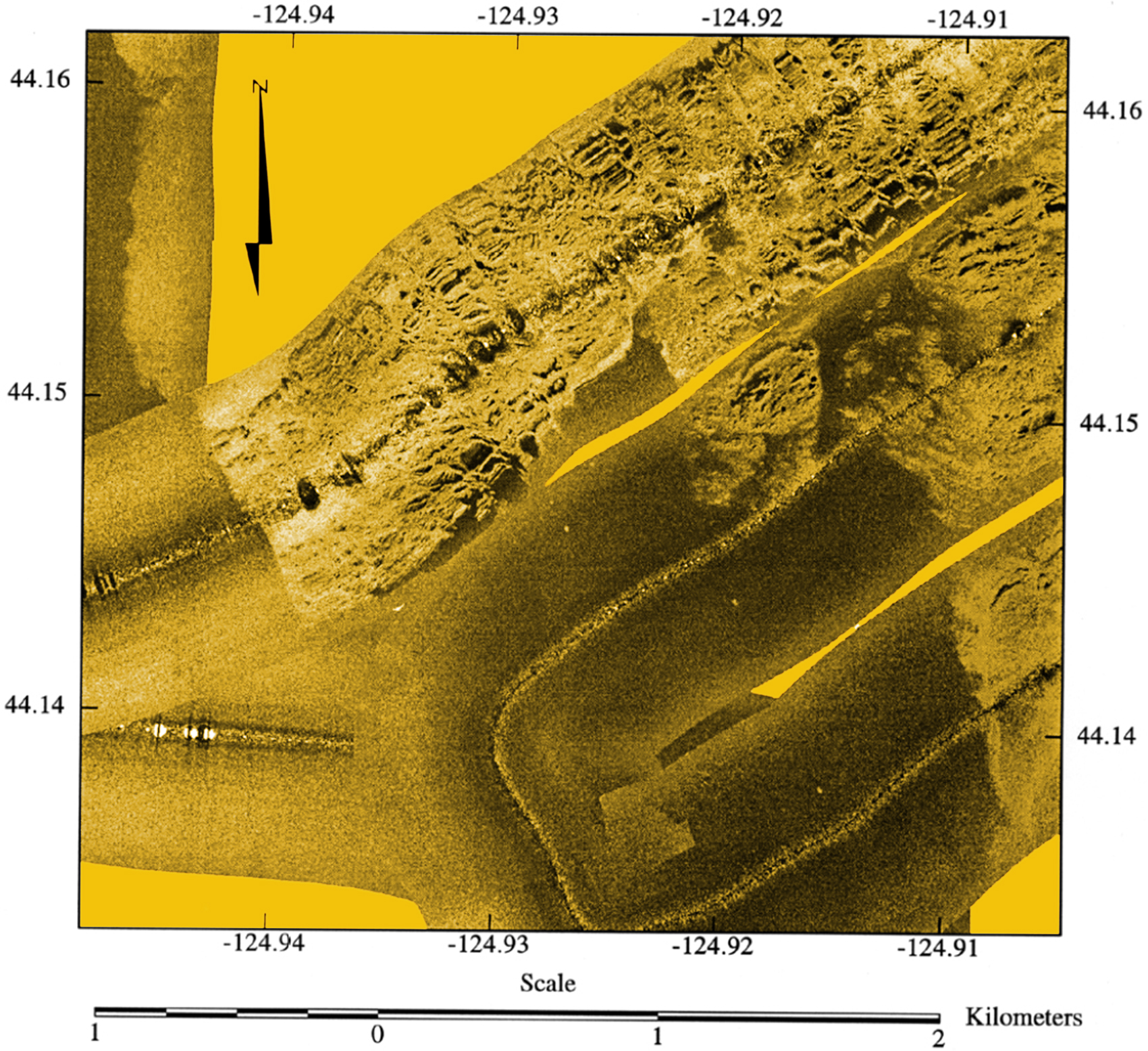
But unlike the present shoreline angle, which is at sea level and is horizontal, these shoreline angles rise and fall, like the shoreline angles of the raised Pleistocene beaches along the coast. The continental shelf had been warped and tilted, possibly during earthquakes.
One of our most memorable discoveries was during our survey of Stonewall Bank southwest of Newport, Oregon, an area known to local commercial fishers as “the rock pile.” Our side-scan sonar imagery showed that Stonewall Bank is a rocky ridge split by a broad former river channel, the seaward extension of the Yaquina River when sea level was lower than it is today (Figure 6-35). Surprisingly, the river channel now slopes about twenty-five feet eastward toward Newport. Since water originally must have run downhill toward the west, we concluded that the river channel was tilted back toward its source during the last twelve thousand years. We had discovered the eastern flank of a broad anticline beneath Stonewall Bank, an anticline formed by a blind reverse fault like the fault that ruptured during the Northridge Earthquake and the faults that may underlie the folded basalt ridges of the Pasco Basin (Figure 6-23).
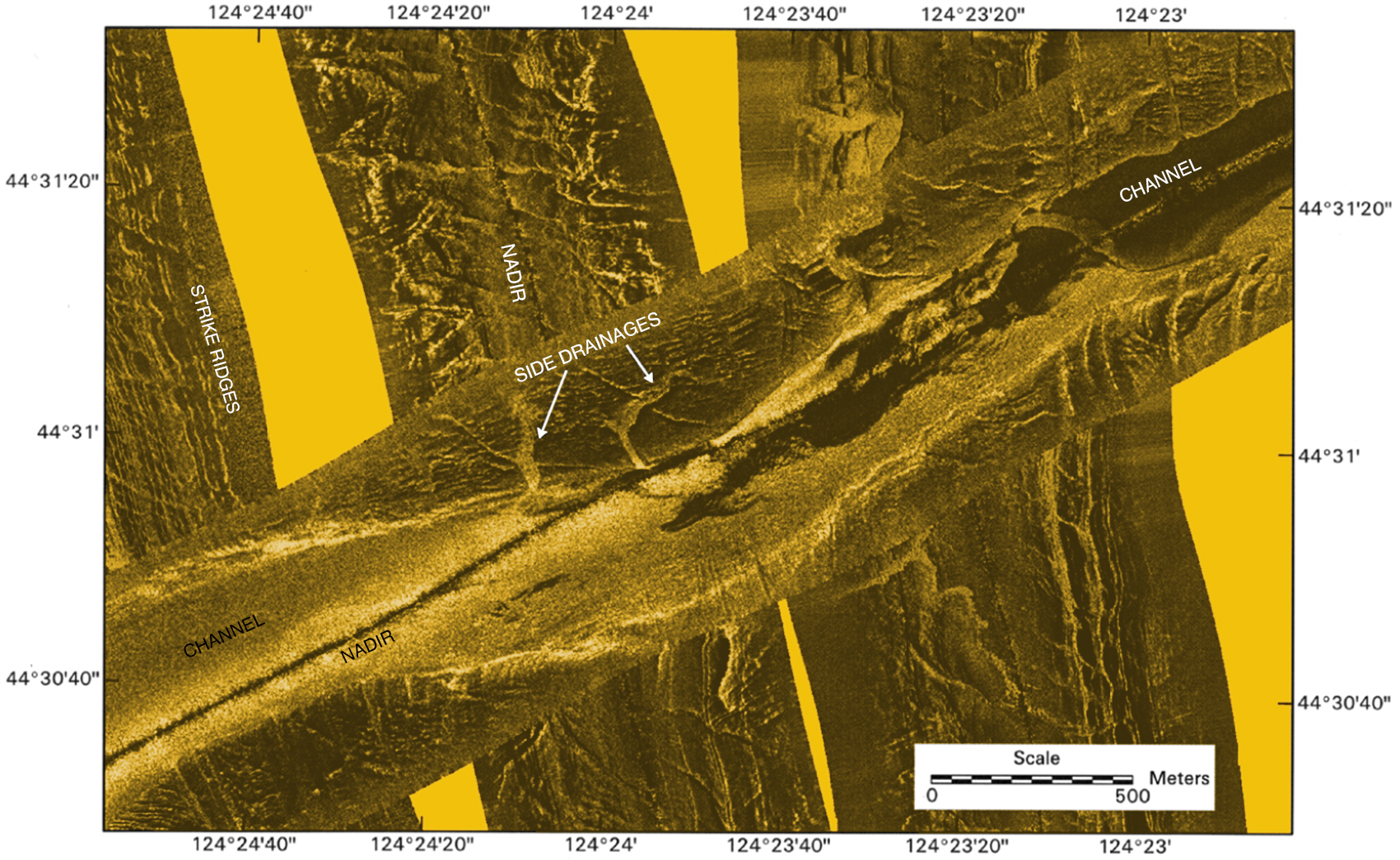
The three sources of northern California earthquakes—the subduction zone, Gorda Plate, and the crust—are so interconnected that it is difficult to isolate faults and earthquakes that are limited to North American continental crust. Where the Cascadia Subduction Zone turns to the southeast near the Mendocino Fracture Zone, it is not a single fault but a zone, fifty to sixty miles wide (Figure 5-2), of thrust faults and warped marine terraces in addition to the buried fault that ruptured in the 1992 Cape Mendocino Earthquake.
Although many crustal faults in this region may have some Holocene displacement, two zones are the most active: the Mad River Fault Zone between Trinidad and Arcata, which includes the Mad River and McKinleyville faults, and the Little Salmon Fault south of Eureka (Figure 4-22). These structures account for about a third of an inch of shortening per year, which is about 20-25 percent of the convergence rate between the Gorda and North America plates. Backhoe trench excavations by Gary Carver of Humboldt State University across these fault zones (Figure 6-36) provide paleoseismologic evidence that the last two earthquakes on the McKinleyville Fault and Mad River Fault produced displacement of at least eight feet for each event, evidence that these earthquakes were greater than M 7. Trench excavations across the Little Salmon River Fault reveal evidence for three earthquakes in the last seventeen hundred years, each with displacements of eight to ten feet. The last earthquake struck about three hundred years ago. The late Holocene slip rate on the Little Salmon River Fault alone is one-fifth inch (three to seven millimeters) per year.
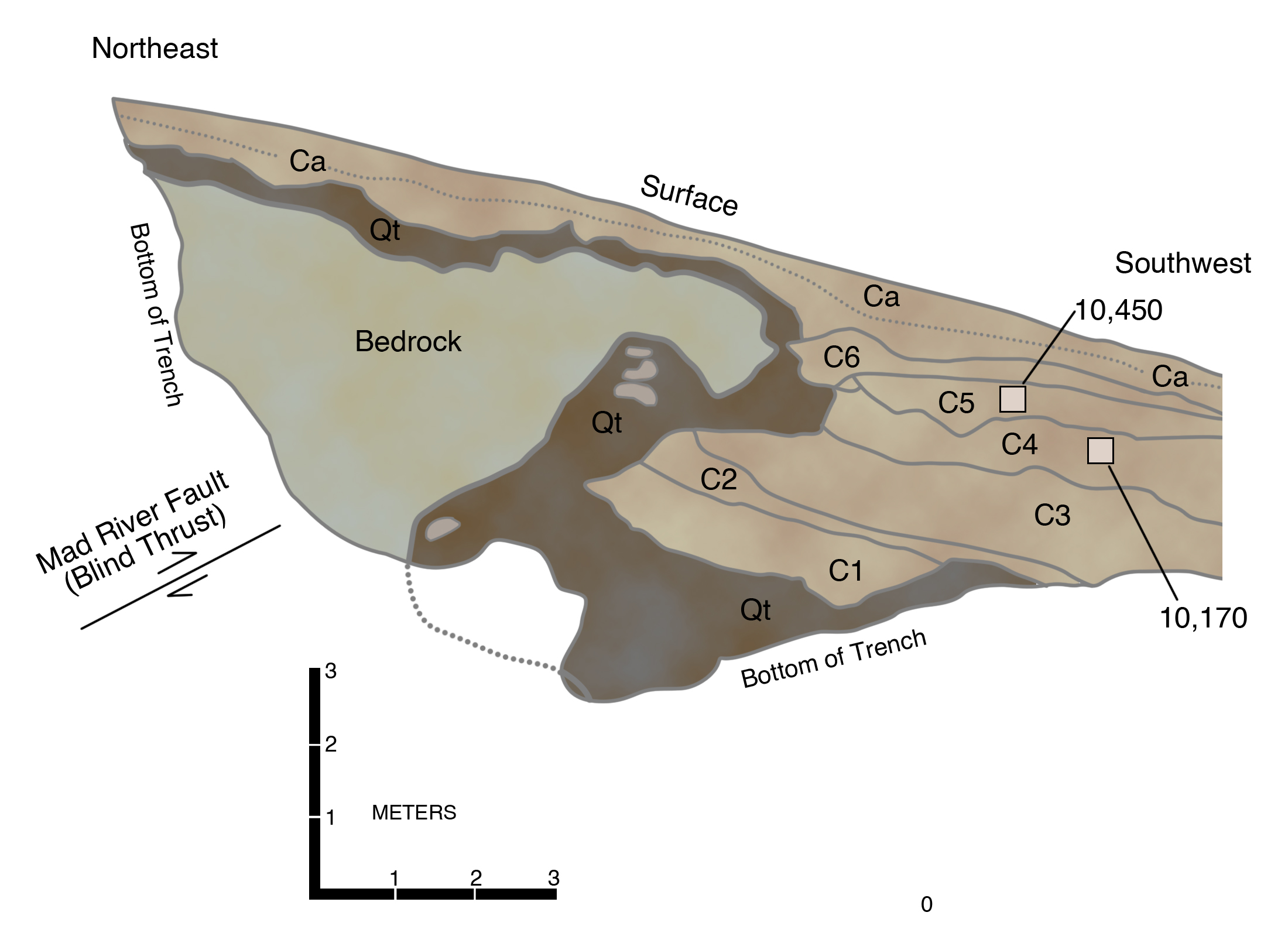
At Clam Beach, near the McKinleyville Fault, Carver found an uplifted beach cliff and tide-pool platform carved by waves from an ancient sea. The beach sand resting on this platform contains a driftwood log that is one thousand to twelve hundred years old, based on radiocarbon dating. Another beach sand deposit overlies the driftwood log. This sand was colonized by beach grass and a coastal forest. A dead tree in this forest, still rooted in a soil on top of the beach deposit, is no more than three hundred years old. This tree and its soil are overlain by still another beach deposit, perhaps recording subsidence related to movement on the McKinleyville Fault at the time of the A.D. 1700 Cascadia Subduction Zone Earthquake.
Between these two fault zones are Arcata Bay and Humboldt Bay, where subsided marshes have been found (Figure 4-12). At first, it was thought that the marsh subsidence was related to rebound from a subduction-zone earthquake, like marshes in Oregon and Washington and in marshes downdropped during the 1964 Alaska Earthquake (Figure 4-15). But this area is so close to the subduction zone that the coast would have been uplifted during an earthquake, just as islands close to the Alaska subduction zone were uplifted in 1964 (Figure 4-15). In addition, the coastline was uplifted in the 1992 Cape Mendocino Earthquake on the subduction zone. The bay was downwarped due to crustal deformation, especially slip on the Little Salmon Fault. Because the age of the drowned marsh is three hundred years, like the age of the youngest subsided marshes in Oregon and Washington, the crustal deformation probably occurred at the same time as the most recent subduction-zone earthquake.
Uplifted marine terraces cut by storm waves provide additional evidence of crustal deformation. If there were no crustal deformation, the older, uplifted marine terraces would be completely level, like the present marine platform is. But the older terraces are tilted and warped, as is evident by viewing the coast north from Patricks Point State Park. This provides evidence that the Earth’s crust in this region is on the move, up and down, through folding and faulting, producing earthquakes in the process.
An earthquake of M 6.4 on June 6, 1932, near Arcata produced intensity as high as VIII, resulting in one death and considerable damage in Eureka. On December 21, 1954, an earthquake of M 6.5-6.6 struck twelve miles east of Arcata in the vicinity of the McKinleyville Fault Zone, causing one death and $3.1 million in damage. And on August 17, 1991, a M 6.2 earthquake struck at seven miles depth beneath the community of Honeydew on the Mattole River. The official estimate of damage in this relatively unpopulated region was fifty thousand dollars, but this estimate is probably low. Intensities of VII and VIII were encountered, as they were in the two earlier crustal earthquakes.
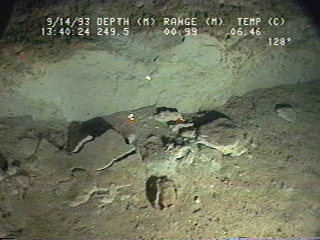
It is clear that for their size, the crustal earthquakes were more damaging than Gorda Plate earthquakes. They struck at shallow depth close to population centers, whereas most of the Gorda Plate earthquakes were offshore, some so far offshore that onshore damage was minimal.
Curiously, under a new California insurance plan discussed in Chapter 10, the Eureka region will be charged earthquake insurance rates that are among California’s lowest, despite accounting for a quarter of the state’s seismicity!
This chapter closes with an image from the submersible DELTA of a fault scarp at a depth greater than 750 feet, too deep for active wave action (Figure 6-37). This fault could have been formed during a crustal earthquake, or it could have been the result of a secondary fault related to a subduction-zone earthquake. The answer to this question is not yet at hand.
12. Summary
In estimating the seismic hazard from crustal earthquakes, we study three lines of evidence: geology, seismology, and geodetic evidence using GPS. In the Puget Sound region, we have all three: Holocene active faults and folds, high instrumental seismicity, and GPS evidence of shortening. In northern California, we also have geological and seismological evidence of earthquake hazard, including damaging historical earthquakes that have caused fatalities. The two Oregon earthquakes come close: the Scotts Mills earthquake probably took place on the Mt. Angel fault, and the Klamath Falls earthquakes were the result of motion on normal faults bounding the Klamath Falls graben.
In other places, the evidence is less complete. The largest crustal earthquakes in the Pacific Northwest on Vancouver Island and near Entiat in northern Washington took place in areas with little or no geological evidence of young faulting. The active Portland Hills Fault is in an area of moderate seismicity, but many of the earthquakes around Portland cannot be correlated to that fault. The Milton-Freewater Earthquake was not assigned to a specific fault, but it may be part of an active fault system following the Olympic-Wallowa Lineament (OWL).
Some areas have geological evidence for young faulting, but have not experienced large earthquakes. These areas include the Oregon Basin and Range east and north of Klamath Falls and the folded basalt ridges of the Pasco Basin in Washington. The faults around La Grande and Baker City, Oregon, show geological evidence of activity, but they have not been the source of large earthquakes. The southeastern end of the OWL has moderate seismicity, but as yet, this area has not been damaged by a large earthquake.
What about the rest of the Northwest? The Oregon Coast Range and the Klamath-Siskiyou regions of Oregon have no clear evidence of active faulting and also have very few earthquakes. Similarly, the Coast Mountains of British Columbia, the Columbia Plateau of Washington, and much of the Blue Mountains of Oregon have low seismicity and little evidence of active faulting. At present, these areas are placed in a lower-risk category, but the next earthquake could prove this assessment wrong.
Suggestions for Further Reading
Allen, J. E., M. Burns, and S. C. Sargent. 1986. Cataclysms on the Columbia. Portland, Timber Press, 211 p.
Atwater, B. F., and A. L. Moore. A tsunami about 1000 years ago in Puget Sound, Washington. Science, v. 258, p. 1614-17.
Bakun, W. H., R. A. Haugerud, M. G. Hopper, and R. S. Ludwin., 2002. The December 1872 Washington State earthquake. Bulletin of the Seismological Society of America, v. 92, p. 3239-58.
Blakely, R. J., R. E. Wells, T. L. Tolan, M. H. Beeson, A.M. Tréhu, and L. M. Liberty. 2000. New aeromagnetic data reveal large strike-slip faults in the northern Willamette Valley, Oregon. Geological Society of America Bulletin, v. 112, p. 1225-33.
Blakely, R. J., R. E. Wells, C. S. Weaver, and S. Y. Johnson. 2002. Location, structure, and seismicity of the Seattle fault zone, Washington: Evidence from aeromagnetic anomalies, geologic mapping, and seismic reflection data. Geological Society of America Bulletin, v. 114, p. 169-77.
Bott, J. D. J., and I. G. Wong. 1993. Historical earthquakes in and around Portland, Oregon. Oregon Geology, v. 55, no. 6, p. 116-22.
Bourgeois, J., and S. Y. Johnson. 2001. Geologic evidence of earthquakes at the Snohomish Delta, Washington, in the past 1200 yr: Geological Society of America Bulletin, v. 113, p. 482-94.
Brocher, T. M., T. Parsons, R. J. Blakely, N. I. Christensen, M. A. Fisher, R. E. Wells, and the SHIPS Working Group. 2001. Upper crustal structure in Puget Lowland, Washington: Results from the 1998 Seismic Hazards Investigations in Puget Sound. Journal of Geophysical Research, v. 106, p. 13,541-13,564.
Bucknam, R. C., E. Hemphill-Haley, and E. B. Leopold. 1992. Abrupt uplift within the past 1700 years at southern Puget Sound, Washington. Science, v. 256, p. 1611-14.
Campbell, N. P., and R. D. Bentley., 1981. Late Quaternary deformation of the Toppenish Ridge uplift in south-central Washington. Geology, v. 9, p. 519-24.
Cassidy, J. F., R. M. Ellis, and G. C. Rogers. 1988. The 1918 and 1957 Vancouver Island earthquakes. Bulletin of the Seismological Society of America, v. 78, p. 617-35.
Clarke, S. H., and G. A. Carver. 1992. Late Holocene tectonics and paleoseismicity, southern Cascadia subduction zone. Science, v. 255, p. 188-92.
D’Antonio, M. 1993. Atomic harvest: Hanford and the lethal toll of America’s nuclear arsenal. New York: Crown Publishers, 304 p.
Dehlinger, P., R. G. Bowen, E. F. Chiburis, and W. H. Westphal. 1963. Investigations of the earthquake of November 5, 1962, north of Portland. The Ore Bin, v. 25, no. 4, p. 53-68
Dengler, L., G. Carver, and R. McPherson. 1992. Sources of North Coast seismicity. California Geology, v. 45, p. 40-53.
Dengler, L., K. Moley, R. McPherson, M. Pasyanos, J. W. Dewey, and M. Murray. 1995. The September 1, 1994 Mendocino Fault earthquake. California Geology, v. 48, p. 43-53.
Dragovich, J.D., J. E. Zollweg, A. L. Qamar, and D. K. Norman., 1997. The Macaulay Creek Thrust, the 1990 5.2-magnitude Deming Earthquake, and Quaternary geologic anomalies in the Deming area, western Whatcom County, Washington—Cause and effects? Washington Geology, v. 25, no. 2, p. 15-27.
Geomatrix Consultants. 1995. Seismic design mapping, State of Oregon. Final report prepared for the Oregon Department of Transportation, Project 2442, Salem, OR.
Gore, R., and J. Richardson. 1998. Cascadia: Living on Fire. National Geographic, v. 193, no. 5, p. 6-37.
Gower, H. D., J. C. Yount, and R. S. Crosson. 1985. Seismotectonic map of the Puget Sound region, Washington. USGS Map I-1613, scale 1:250,000, booklet, 15 p.
Haugerud, R. A., D. J. Harding, S. Y. Johnson,J. L. Harless, C. S. Weaver, and B. L. Sherrod. 2003. High-resolution lidar topography of the Puget Lowland, Washington. GSA Today, v. 13, no. 6, p. 4-10.
Hemphill-Haley, M. A., W. D. Page, G. A. Carver, and R. M. Burke. 2000. Paleoseismology of the Alvord Fault, Steens Mountain, southeastern Oregon. American Geophysical Union Reference Shelf 4, p. 537-40.
Humboldt Earthquake Information Center. How to survive earthquakes and tsunamis on the north coast. Humboldt State University, Arcata CA 95532-8299, 23 p. A simple guide to protection against earthquakes and tsunamis. Free. Web site: http://sorrel.humboldt.edu/~geodept/earthquakes/eqk_info.html.
Hyndman, R. D., S. Mazzotti, D. Weichert, and G. C. Rogers. 2003. Frequency of large crustal earthquakes in Puget Sound-southern Georgia Strait predicted from geodetic and geological deformation rates. Journal of Geophysical Research, v. 108, doi:10.1029/2001JB001710.
Hyndman, R. D., G. C. Rogers, H. Dragert, K. Wang, J. J. Clague, J. Adams, and P. T. Bobrowski. 1996. Giant earthquakes beneath Canada’s west coast. Geoscience Canada, v. 23, no. 2, p. 63-72.
Jacoby, G. C., P. L. Williams, and B. M. Buckley. 1992. Tree ring correlation between prehistoric landslides and abrupt tectonic events in Seattle, Washington. Science, v. 258, p. 1621-23.
Johnson, S. Y., C. J. Potter, J. M. Armentrout, J. J. Miller, C. Finn, and C. S. Weaver. 1996. The southern Whidbey Island fault: An active structure in the Puget Lowland, Washington. Geological Society of America Bulletin, v. 108, p. 334-354.
Johnson, S. Y., S. V. Dadisman, J. R. Childs, and W. D. Stanley. 1999. Active tectonics of the Seattle fault and central Puget Sound, Washington: Implications for earthquake hazards. Geological Society of America Bulletin, v. 111, p. 1042-1053.
Karlin, R. E., and S. E. B. Abella. 1992. Paleoearthquakes in the Puget Sound region recorded in sediments from Lake Washington, U.S.A. Science, v. 258, p. 1617-20.
Kelsey, H. M., and G. A. Carver. 1988. Late Neogene and Quaternary tectonics associated with northward growth of the San Andreas transform fault, northern California. Journal of Geophysical Research, v. 93, p. 4797-19.
Komar, P. D. 1997. The Pacific Northwest Coast: Living with the Shores of Oregon and Washington. Durham, N.C.: Duke University Press, 195 p.
Liberty, L. M., M. A. Hemphill-Haley, and I. P. Madin. 2003. The Portland Hills Fault: Uncovering a hidden fault in Portland, Oregon, using high resolution geophysical metthods. Tectonophysics, v. 368, p. 89-103.
Logan, R. L., and T. J. Walsh. 1995. Evidence for a large prehistoric seismically induced landslide into Lake Sammamish. Washington Geology, v. 23, no. 4, p. 3-5.
Logan, R. L., R. L. Schuster, P. T. Pringle, T. J. Walsh, and S. P. Palmer. 1998. Radiocarbon ages of probable coseismic features from the Olympic Peninsula and Lake Sammamish, Washington. Washington Geology, v. 16, no. 2/3, p. 59-67.
Madin, I. P., and others. 1993. March 25, 1993, Scotts Mills earthquake—western Oregon’s wake-up call. Oregon Geology, v. 44, no. 3, p. 51-57.
Madole, R. F., R. L. Schuster, and A. M. Sarna-Wojcicki. 1995. Ribbon Cliff landslide, Washington, and the earthquake of 14 December 1872. Bulletin of the Seismological Society of America, v. 85, p. 986-1002.
Mann, G. M., and C. E. Meyer. 1993. Late Cenozoic structure and correlations to seismicity along the Olympic-Wallowa Lineament, northwest United States. Geological Society of America Bulletin, v. 105, p. 853-71.
McCrory, P. A. 1996. Evaluation of fault hazards, northern coastal California. USGS Open-File Report 96-656, 87 p.
McCrory, P. A., D. S. Foster, W. W. Danforth, and M. R. Hamer. 2002. Crustal deformation at the leading edge of the Oregon Coast Range block, offshore Washington (Columbia River to Hoh River). USGS Professional Paper 1661-A, 47 p.
McNeill, L. C., C. Goldfinger, R. S. Yeats, and L. D. Kulm. 1998. The effects of upper plate deformation on records of prehistoric Cascadia subduction zone earthquakes. Geological Society, London Special Publication 146, p. 321-42.
McPherson, R .C., and L. A. Dengler. 1992. The Honeydew Earthquake. California Geology, v. 45, p. 31-39.
Nelson, A. R., S. Y. Johnson, H. M. Kelsey, R. E. Wells, B. L. Sherrod, S. K. Pezzopane, L.-A. Bradley, R. D. Koehler, III, and R. C. Bucknam. 2003. Late Holocene earthquakes on the Toe Jam Hill fault, Seattle fault zone, Bainbridge Island, Washington. Geological Society of America Bulletin, v. 115, p. 1388-1403.
Oppenheimer, D., and others. 1993. The Cape Mendocino, California, earthquakes of April 1992: subduction at the triple junction. Science, v. 261, p. 433-38.
Pezzopane, S., and R. Weldon. 1993. Tectonic role of active faulting in central Oregon. Tectonics, v. 12, p. 1140-69.
Rogers, G. C. 1994. Earthquakes in the Vancouver area, in Monger, J. W. H., ed., Geology and geological hazards of the Vancouver region, southwestern British Columbia. Geological Survey of Canada Bulletin 481, p. 221-29.
Schuster, R .L., R. L. Logan, and P. T. Pringle. 1992. Prehistoric rock avalanches in the Olympic Mountains, Washington. Science, v. 258, p. 1620-21.
Stein, R. S., and R. S. Yeats. 1989. Hidden earthquakes. Scientific American, v. 260, no. 6, p. 48-57. (A discussion of blind faults and earthquakes.)
U.S. Geodynamics Committee. 1994. Mount Rainier, Active Cascade Volcano. Washington, D.C.: National Academy Press, 114 p.
Walsh, T. J., R. L. Logan, and K. G. Neal. 1997. The Canyon River fault, an active fault in the southern Olympic Range, Washington. Washington Geology, v. 25, no. 4, p. 21-24.
Wiley, T. J., and others. 1993. Klamath Falls earthquakes, September 20, 1993—including the strongest quake ever measured in Oregon. Oregon Geology, v. 55, no. 6, p. 127-36.
Wilson, J. R., M. J. Bartholomew, and R. J. Carson. 1979. Late Quaternary faults and their relationship to tectonism in the Olympic Peninsula, Washington. Geology, v. 7, p. 235-39.
Wong, I. G., and J. D. J. Bott. 1995. A look back at Oregon’s earthquake history, 1841-1994. Oregon Geology, v. 57, no. 6, p. 125-39.
Wong, I. G., M. A. Hemphill-Haley, L. M. Liberty, and I. P. Madin. 2001. The Portland Hills Fault: An earthquake generator or just another old fault? Oregon Geology, v. 63, p. 39-50.
Yeats, R.S., Graven, E.P., Werner, K.S., Goldfinger, C., and Popowski, T.A., 1996, Tectonics of the Willamette Valley, Oregon: U.S. Geol. Survey Prof. Paper 1560, p. 183-222, maps, 1:100,000.
Yeats, R. S., L. D. Kulm, C. Goldfinger, and L. C. McNeill. 1998. Stonewall anticline: An active fold on the Oregon continental shelf. Geological Society of America Bulletin, v. 110, p. 572-87.

